How to Plant and Grow a Succulent Garden
Creating a succulent garden can be one of the most rewarding and visually stunning projects you can undertake, whether you're a seasoned gardener or a complete novice. The beauty of succulents lies not only in their unique shapes and colors but also in their low maintenance needs. Imagine walking into your home or stepping into your garden, greeted by a vibrant array of these hardy plants, each telling a story of resilience and beauty. But before you get your hands dirty, it’s essential to understand the basics of planting and growing a succulent garden. This guide will take you through everything you need to know, from choosing the right plants to ensuring they thrive in their environment.
First things first, let's talk about the allure of succulents. These fascinating plants come in many varieties, each with its distinct characteristics. Some might remind you of a miniature forest, while others could be reminiscent of a colorful dessert landscape. The best part? They are incredibly forgiving. If you’ve ever felt like you have a black thumb, succulents might just be your new best friend. They require minimal watering and can adapt to various light conditions, making them perfect for any space, be it indoors or outdoors.
Now, before diving into the nitty-gritty of planting, it’s crucial to understand your environment. Are you planning to create a garden outdoors, or are you thinking of a lovely indoor arrangement? Each setting will have its unique requirements, and knowing these will set you up for success. For instance, outdoor succulents will face different challenges than those kept indoors, such as varying temperatures, humidity levels, and sunlight exposure. So, let’s roll up our sleeves and get started on your succulent journey!
When it comes to selecting succulents, the options can feel overwhelming. However, focusing on a few popular varieties can simplify your decision-making process. Some of the most beloved succulents include:
- Echeveria: Known for its rosette shape and vibrant colors, this succulent is a favorite for many.
- Aloe Vera: Not only does it look good, but it also has medicinal properties!
- Jade Plant: A symbol of good luck, this succulent is easy to care for and grows beautifully.
- Hens and Chicks: Perfect for rock gardens, these plants produce charming little offsets.
Each of these varieties has its specific needs regarding sunlight, watering, and soil composition. Taking the time to research these requirements will pay off in the long run, ensuring your succulent garden flourishes.
Now that you’ve chosen your succulents, it’s time to prepare the soil. This step is crucial because succulents thrive in well-draining soil that prevents water from sitting around their roots. A common mix for succulents includes potting soil combined with perlite or sand to enhance drainage. The ideal soil composition typically consists of:
| Ingredient | Purpose |
|---|---|
| Potting Soil | Provides a nutrient base for your plants. |
| Perlite | Improves aeration and drainage. |
| Sand | Enhances drainage and mimics natural desert conditions. |
By mixing these components, you create a balanced environment that allows your succulents to thrive. Remember, good drainage is your best friend when it comes to preventing root rot, a common issue with succulents.
Watering your succulents might seem straightforward, but it’s one of the most critical aspects of care. The general rule of thumb is to water deeply but infrequently. This means allowing the soil to dry out completely between waterings. Overwatering is a common mistake that can lead to disastrous results, such as mushy leaves and root rot. Instead, check the soil moisture by sticking your finger into the soil; if it feels dry an inch down, it’s time to water!
Understanding the sunlight needs of your succulents is essential for their health. Most succulents thrive in bright, indirect sunlight, but some varieties can handle direct sunlight. Positioning your plants correctly will ensure they receive the right amount of light without getting scorched.
Q: How often should I water my succulents?
A: Water your succulents every two weeks during the growing season, allowing the soil to dry out completely between waterings.
Q: Can I grow succulents indoors?
A: Absolutely! Just ensure they receive enough light, either from a sunny window or a grow light.
Q: What should I do if my succulent leaves are turning yellow?
A: Yellow leaves often indicate overwatering. Check the soil and adjust your watering schedule accordingly.
Q: How can I propagate my succulents?
A: You can propagate succulents through leaf cuttings or offsets. Just ensure you let the cuttings dry out for a few days before planting them in soil.
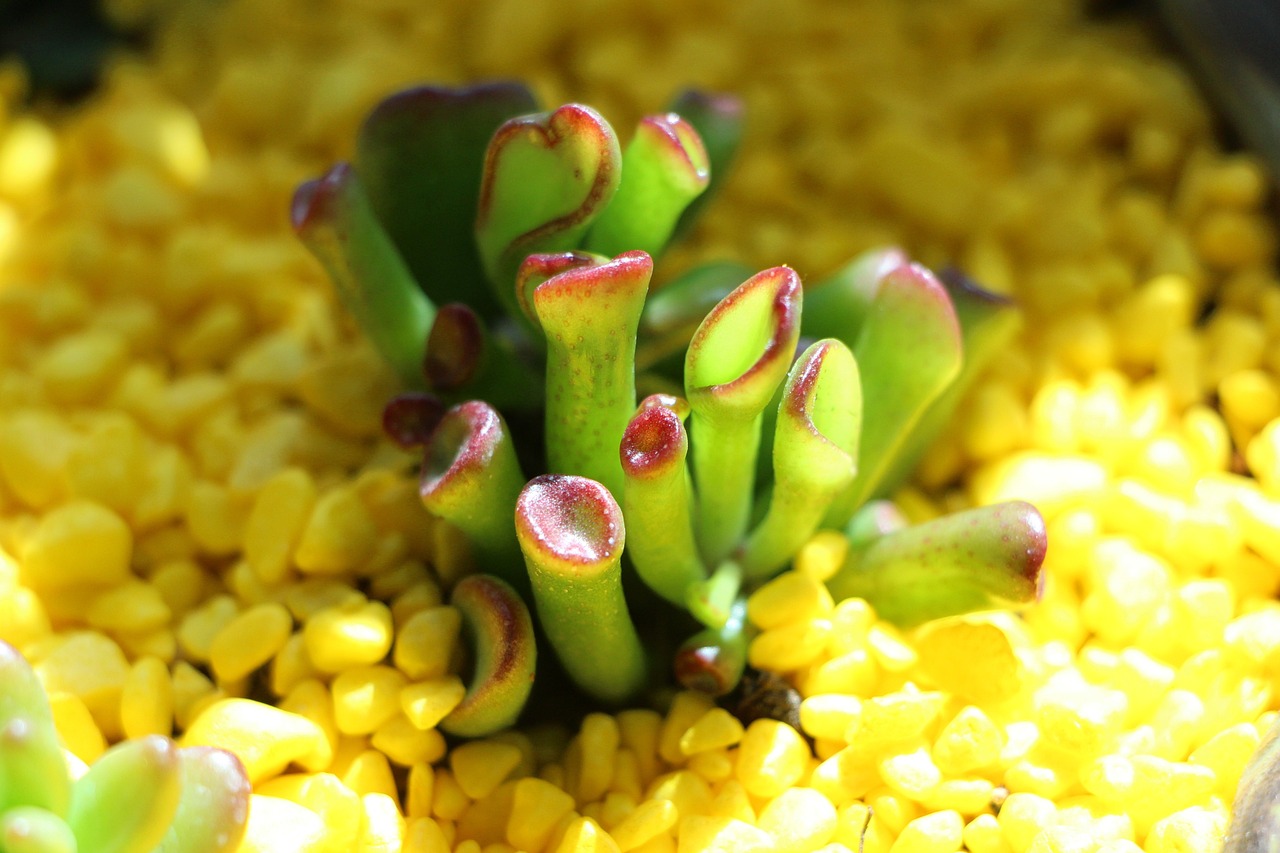
Choosing the Right Succulents
When it comes to creating a stunning succulent garden, the first step is to choose the right succulents. With so many varieties available, it can feel overwhelming, but understanding the specific needs and characteristics of each type can make your selection process much smoother. Succulents are not just beautiful; they are also incredibly resilient, making them perfect for both beginners and experienced gardeners alike.
One of the most popular choices for succulent gardens is the Jade Plant (Crassula ovata). Known for its thick, glossy leaves, this succulent not only looks great but is also believed to bring good luck. Another favorite is the Hens and Chicks (Sempervivum), which produces rosettes that can thrive in various conditions. Both of these plants are relatively low-maintenance, making them ideal for anyone just starting out.
For those looking to add a splash of color, consider the Flapjack Plant (Kalanchoe luciae) or the Rainbow Echeveria (Echeveria 'Rainbow'). These varieties showcase vibrant hues that can brighten up any garden space. When selecting succulents, it's crucial to pay attention to their light and water requirements, as these can vary significantly between species. For instance, some succulents prefer bright, indirect sunlight, while others thrive in full sun.
To help you make informed decisions, here’s a quick comparison table of some popular succulents and their specific needs:
| Succulent Name | Light Requirements | Watering Frequency | Ideal Temperature |
|---|---|---|---|
| Jade Plant | Bright, indirect sunlight | Every 2-3 weeks | 65-75°F (18-24°C) |
| Hens and Chicks | Full sun | Every 1-2 weeks | 60-80°F (15-27°C) |
| Flapjack Plant | Full sun | Every 2-3 weeks | 65-80°F (18-27°C) |
| Rainbow Echeveria | Bright, indirect sunlight | Every 2 weeks | 60-75°F (15-24°C) |
Additionally, it's essential to consider the climate in your area. Some succulents are more tolerant of heat and drought, while others may require a bit more moisture and cooler temperatures. If you live in a particularly hot climate, opt for varieties that can withstand high temperatures, such as Aloe Vera or Agave. Conversely, if you reside in a cooler region, you might want to choose succulents that can handle lower temperatures.
Ultimately, the key to a successful succulent garden lies in diversity. Mixing different types of succulents can create a visually appealing arrangement that also caters to varying care requirements. So, take your time, do your research, and choose succulents that will not only thrive in your environment but also bring you joy every time you see them.
- What are the best succulents for beginners? Jade Plant, Hens and Chicks, and Aloe Vera are excellent choices for novice gardeners.
- How often should I water my succulents? Generally, watering every 2-3 weeks is sufficient, but it depends on the specific plant and environmental conditions.
- Can I grow succulents indoors? Yes, many succulents thrive indoors as long as they receive adequate light and are planted in well-draining soil.
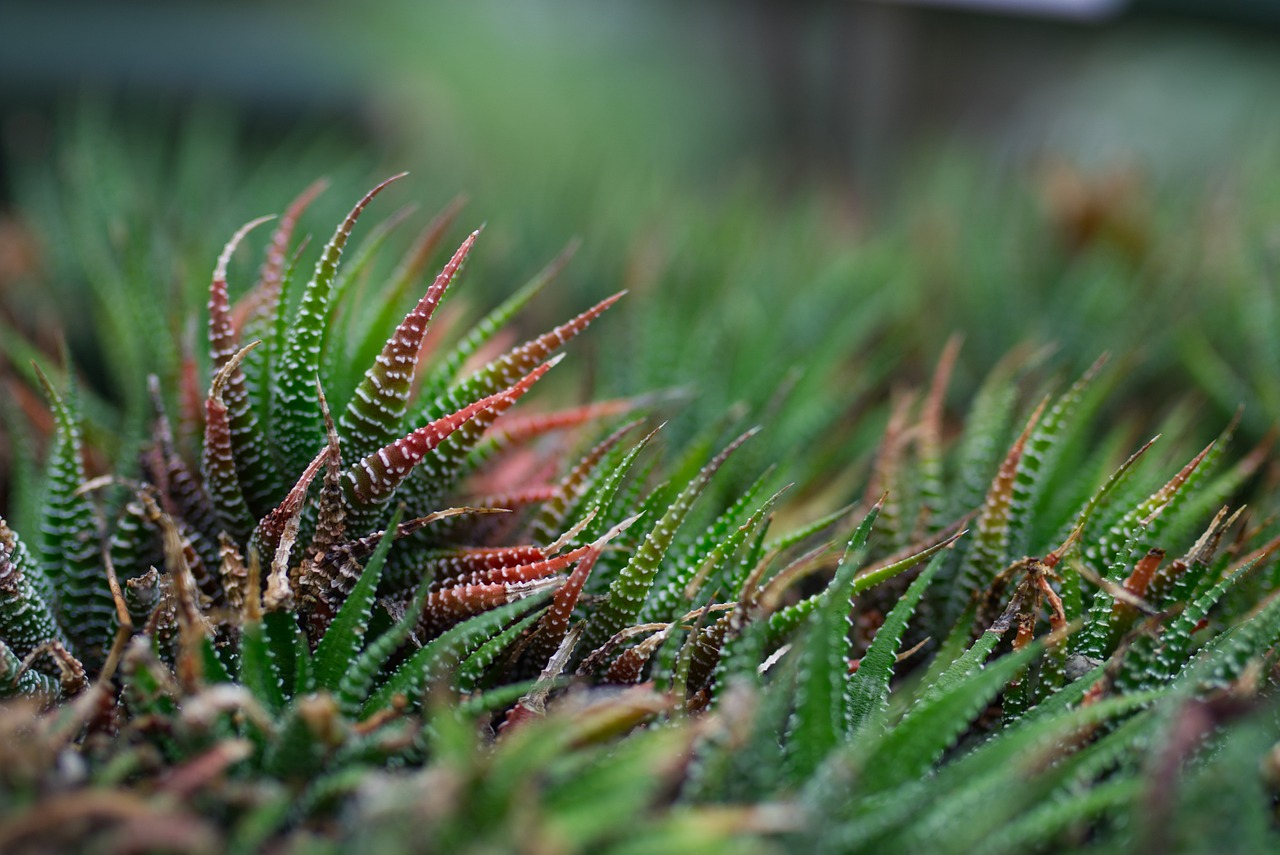
Preparing the Soil
When it comes to creating a thriving succulent garden, proper soil preparation is absolutely essential. Succulents, with their fleshy leaves and drought-resistant nature, thrive best in soil that mimics their native arid environments. This means you need to focus on achieving the right balance of drainage, aeration, and nutrients. Without the right soil conditions, even the hardiest succulents can struggle to survive, leading to frustration for any gardener.
The first step in preparing your soil is to understand what makes it suitable for succulents. Generally, a well-draining soil mix is critical. A mixture that includes potting soil, coarse sand, and perlite or pumice can create an ideal environment. Potting soil provides a base of nutrients, while sand and perlite enhance drainage, preventing the roots from sitting in water. For your convenience, here’s a simple breakdown of an effective soil composition:
| Ingredient | Purpose |
|---|---|
| Potting Soil | Provides essential nutrients |
| Coarse Sand | Improves drainage |
| Perlite or Pumice | Enhances aeration and drainage |
Next, let’s talk about drainage techniques. Succulents are particularly prone to root rot, which occurs when the roots are waterlogged. To combat this, you might consider using pots with drainage holes or even creating a raised bed for outdoor succulents. If you opt for containers, ensure that you use a potting mix designed specifically for succulents, which often contains added components for improved drainage.
Moreover, soil amendments can significantly boost your soil quality. These additives not only enhance nutrient availability but also improve moisture retention without compromising drainage. For instance, mixing in some organic compost can provide a slow-release source of nutrients that succulents appreciate, especially during their growing seasons. Just remember, moderation is key; too much organic matter can lead to overly rich soil, which succulents do not favor.
In summary, preparing the soil for your succulent garden involves a careful blend of the right ingredients and techniques. By focusing on drainage, aeration, and nutrient balance, you can create an environment where your succulents will flourish. So roll up your sleeves, get your hands dirty, and let’s create a succulent paradise!
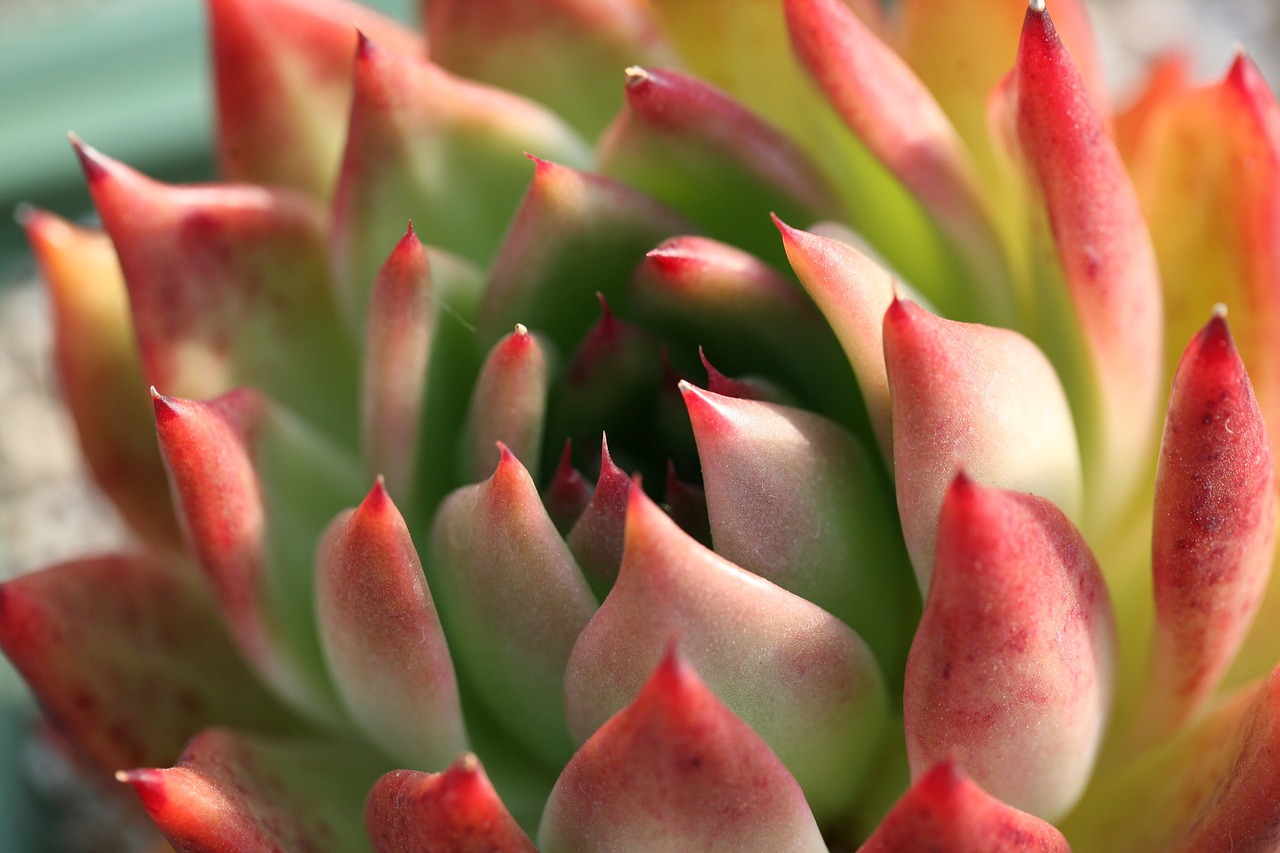
Soil Composition
When it comes to creating a thriving succulent garden, understanding is absolutely essential. Succulents are unique plants that store water in their leaves, stems, and roots, which means they require a specific type of soil to flourish. The ideal soil for succulents is not your typical garden soil; instead, it must be well-draining to prevent the roots from sitting in moisture, which can lead to root rot.
The best soil composition for succulents typically includes a mix of the following ingredients:
- Potting Soil: A good base that retains some moisture while allowing drainage.
- Perlite: This volcanic glass helps to improve aeration and drainage, making it a must-have for succulent soil mixes.
- Sand: Coarse sand can enhance drainage and mimic the natural habitat of succulents.
- Gravel: Small gravel particles can also be added to the mix to further improve drainage.
For those looking to create their own succulent soil mix, a common ratio is:
| Ingredient | Ratio |
|---|---|
| Potting Soil | 50% |
| Perlite | 30% |
| Coarse Sand | 20% |
By combining these ingredients, you create a lightweight, fast-draining soil that provides the perfect environment for your succulents to grow. It’s important to note that not all potting soils are created equal; some may contain additives that retain too much moisture. Always check the label and opt for a mix that is specifically designed for cacti and succulents.
Furthermore, understanding the pH level of your soil can also play a significant role in the health of your plants. Succulents generally prefer a slightly acidic to neutral pH, around 6.0 to 7.0. You can easily test your soil’s pH using a simple pH meter or test kit available at garden centers.
In summary, the right soil composition is crucial for the success of your succulent garden. By focusing on well-draining materials and ensuring the right pH, you set your plants up for a vibrant and healthy life. Remember, a happy succulent is a thriving succulent!
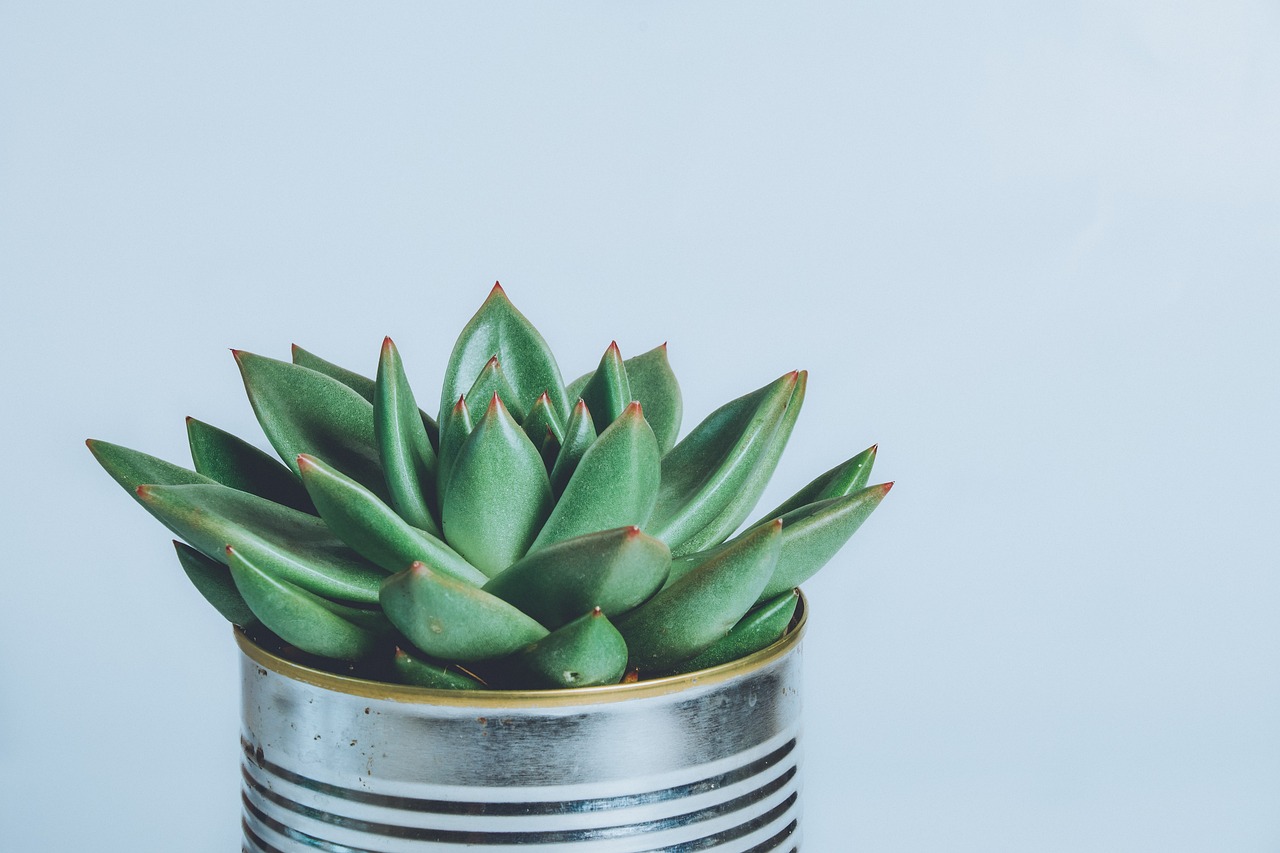
Drainage Techniques
When it comes to creating a thriving succulent garden, drainage is paramount. Succulents are adapted to arid environments, which means they thrive in well-draining soil that allows excess water to escape. Without proper drainage, water can accumulate around the roots, leading to root rot—a common issue that can quickly turn your succulent paradise into a wilted nightmare. So, what are some effective to ensure your succulents stay healthy and happy?
First and foremost, consider using pots with drainage holes. These little openings are your succulents' best friends, allowing any excess moisture to escape. If you find a beautiful pot without drainage holes, don’t fret! You can still use it by creating a layer of pebbles or gravel at the bottom. This layer acts as a reservoir, preventing roots from sitting in water. Just remember, this is a temporary solution, and keeping an eye on moisture levels is crucial.
Another effective technique is to mix your potting soil with materials that enhance drainage. A typical succulent soil mix includes:
- Perlite: This lightweight material improves aeration and drainage.
- Sand: Coarse sand can help create a gritty texture that allows water to flow through easily.
- Pumice: A volcanic rock that provides excellent drainage and aeration.
By incorporating these materials into your soil mix, you create a well-aerated environment that promotes healthy root growth.
Additionally, consider the placement of your succulents. Elevating pots with plant stands or placing them on gravel trays can enhance drainage even further. This way, any excess water can drain away easily, preventing water from pooling around the base of the pot. Remember, succulents love to bask in the sun, but they also appreciate good airflow around their roots.
Lastly, if you notice that your succulents are not thriving, it might be time to reassess your drainage techniques. Check for signs of overwatering, such as yellowing leaves or mushy stems, and adjust your watering habits or soil composition accordingly. Keeping a close eye on your plants will help you catch any issues before they escalate.
In summary, effective drainage techniques are essential for maintaining the health of your succulent garden. By utilizing pots with drainage holes, enhancing your soil mix, and ensuring proper placement, you can create an environment where your succulents can flourish. Remember, a little attention to drainage can go a long way in keeping your plants vibrant and beautiful!
Q: How often should I water my succulents?
A: Watering frequency depends on various factors, including the type of succulent, pot size, and environmental conditions. Generally, it's best to water when the top inch of soil feels dry to the touch.
Q: Can I use regular potting soil for succulents?
A: Regular potting soil retains too much moisture for succulents. It's advisable to use a specialized cactus or succulent mix that promotes drainage.
Q: What should I do if my succulent has root rot?
A: If you suspect root rot, gently remove the plant from its pot, trim away the affected roots, and repot it in fresh, well-draining soil.
Q: Is it necessary to fertilize my succulents?
A: While not strictly necessary, fertilizing during the growing season can help promote healthy growth. Use a diluted, balanced fertilizer formulated for succulents.
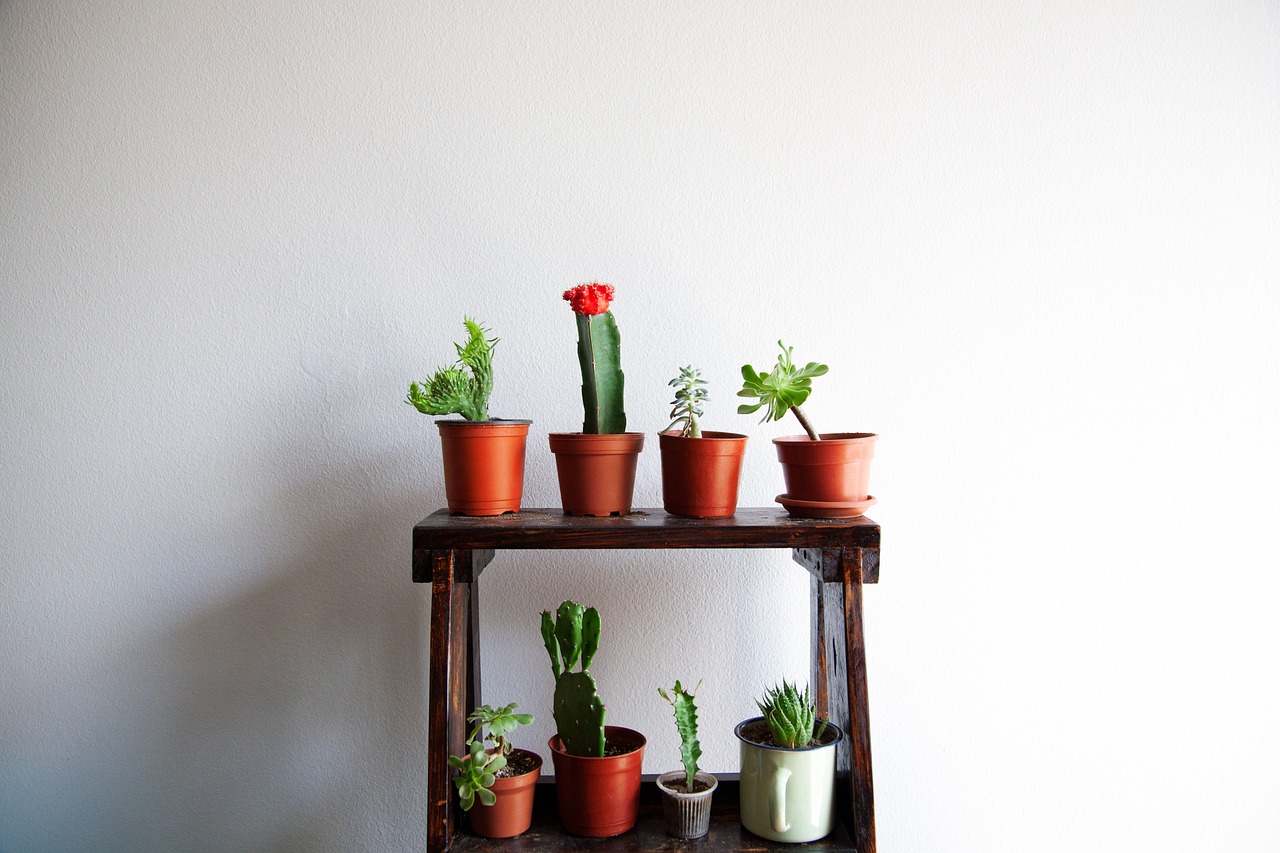
Soil Amendments
When it comes to nurturing your succulent garden, play a crucial role in creating the perfect growing environment. Just like adding spices to a dish can elevate its flavor, the right amendments can significantly enhance the quality of the soil, leading to healthier and more vibrant succulents. So, what exactly should you consider when amending your soil?
First and foremost, it's essential to understand that succulents thrive in well-draining soil. This means that while you want to provide them with enough nutrients, you also need to ensure that excess moisture can escape easily. A good mix typically consists of a combination of potting soil, coarse sand, and perlite or pumice. These ingredients not only improve drainage but also promote aeration, which is vital for the roots of your succulents.
Here are some commonly used soil amendments that can boost your succulent garden:
- Coarse Sand: This is a fantastic addition that improves drainage and prevents compaction. It mimics the natural habitat of succulents, which often grow in sandy, arid conditions.
- Pumice: A volcanic rock that is lightweight and porous, pumice enhances aeration and retains moisture without becoming waterlogged.
- Perlite: Similar to pumice, perlite is a great amendment that helps with drainage and aeration. It's particularly useful if you're working with heavier soils.
- Organic Matter: Adding a small amount of organic compost can provide essential nutrients without overwhelming your succulents. Just be cautious, as too much can lead to overly rich soil, which succulents do not favor.
Moreover, it's not just about mixing these amendments; the proportions matter too! A typical soil mix for succulents might consist of:
| Ingredient | Proportion |
|---|---|
| Potting Soil | 40% |
| Coarse Sand | 30% |
| Pumice or Perlite | 30% |
By paying attention to the composition of your soil, you can create a thriving environment for your succulents. Remember, the right amendments not only support healthy growth but also help prevent common issues like root rot, which can be a devastating problem for succulent enthusiasts. So, don't overlook this critical aspect of succulent care!
Q: Can I use regular garden soil for succulents?
A: While you can use garden soil, it's generally not recommended because it tends to retain too much moisture. It's better to use a specially formulated succulent mix or amend your garden soil with sand and perlite to improve drainage.
Q: How often should I amend my succulent soil?
A: It's a good practice to refresh your soil mix every couple of years, especially if you've noticed poor drainage or if your succulents aren't thriving. Regularly check the health of your plants and adjust as needed.
Q: Are there any homemade amendments I can use?
A: Absolutely! You can create your own amendments using materials like crushed eggshells for calcium or coffee grounds in moderation for added nutrients. Just ensure they won't retain too much moisture.
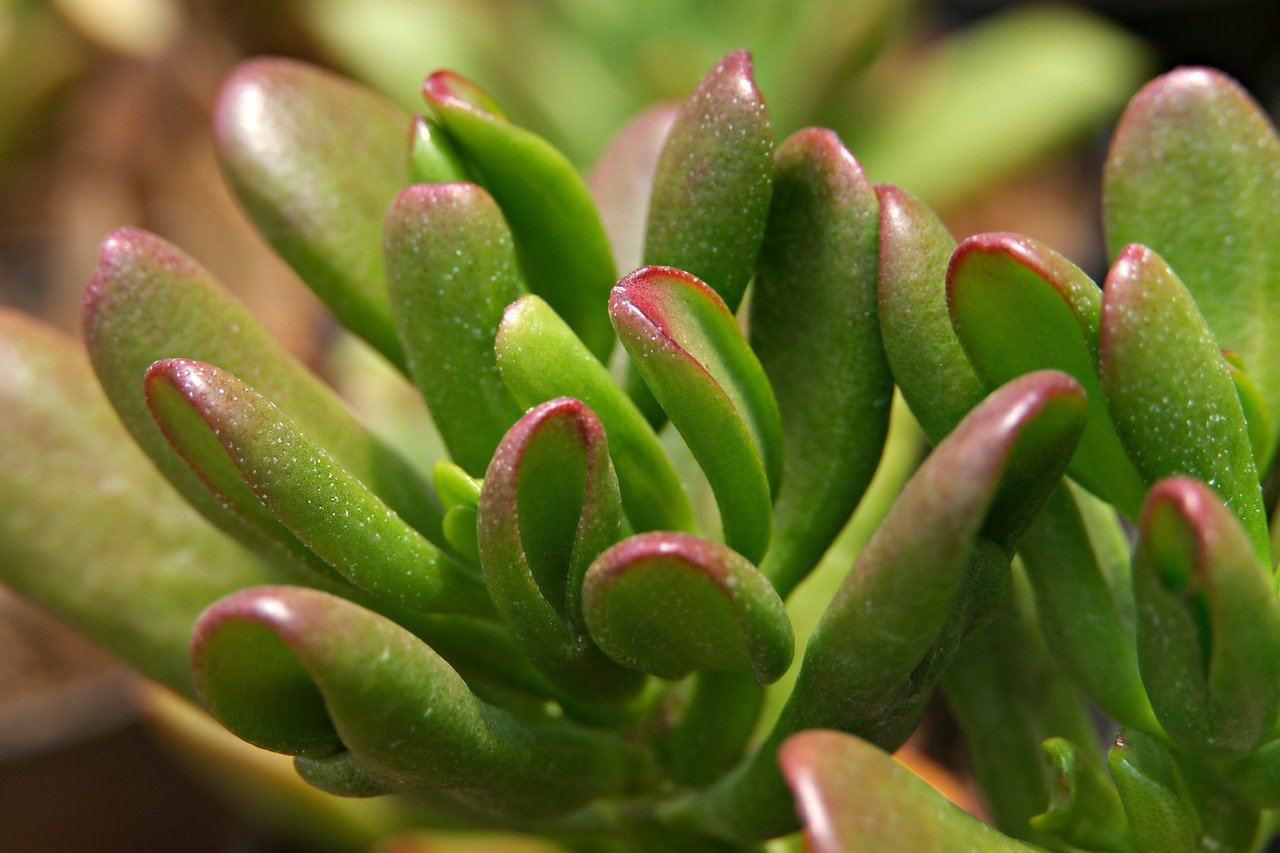
Watering Practices
When it comes to watering your succulents, finding the right balance is crucial. Overwatering is one of the most common mistakes that succulent enthusiasts make, leading to root rot and a host of other problems. On the other hand, underwatering can stunt growth and cause your plants to wither. So, how do you strike that perfect balance? It all starts with understanding your plants' needs and the environment they thrive in.
Firstly, consider the type of succulent you have. Different varieties have unique watering requirements. For instance, Haworthia and Jade plants prefer their soil to dry out completely between waterings, while Aloe Vera can tolerate a bit more moisture. A good rule of thumb is to water your succulents when the top inch of soil feels dry to the touch. This can be easily tested by sticking your finger into the soil. If it feels dry, it's time to give your plants a drink!
Next, let's talk about the watering technique. It's essential to water deeply but infrequently. This means that when you do water, you should soak the soil until water drains out of the bottom of the pot. This practice encourages the roots to grow deeper into the soil, making your plants more resilient. However, be cautious not to let your succulents sit in standing water, as this can lead to root rot. If you're using pots without drainage holes, consider switching to ones that do, or use a watering method that allows excess water to escape.
Another important aspect to consider is the seasonal changes. Succulents typically need more water during their growing season, which is usually in the spring and summer. During these months, you might find yourself watering every 1-2 weeks, depending on your climate. Conversely, as winter approaches, succulents enter a dormant phase and require significantly less water. In fact, you might only need to water them once a month or even less frequently during this time. Adjusting your watering schedule according to the seasons will help keep your succulents healthy and thriving.
To help you visualize the watering schedule, here's a simple table:
| Season | Watering Frequency |
|---|---|
| Spring | Every 1-2 weeks |
| Summer | Every 1-2 weeks |
| Fall | Every 2-3 weeks |
| Winter | Once a month |
Finally, be mindful of your environment. Factors such as humidity, temperature, and light can all impact how often you should water your succulents. For example, if you live in a particularly dry climate, you might need to water more frequently than someone in a humid area. Similarly, succulents placed in direct sunlight may dry out faster than those in partial shade. Always observe your plants; they will often give you cues when they need water, such as drooping leaves or a shriveled appearance.
In summary, mastering the art of watering your succulents involves understanding their specific needs, implementing effective watering techniques, adjusting your schedule with the seasons, and considering your environmental conditions. With these practices in mind, you'll be well on your way to nurturing a thriving succulent garden!
- How do I know when to water my succulents? Check the top inch of soil; if it's dry, it's time to water.
- Can I use tap water for my succulents? Yes, but let it sit for 24 hours to allow chlorine to evaporate.
- What should I do if I overwater my succulents? Allow the soil to dry out completely and remove any affected leaves.
- Do succulents need fertilizer? They benefit from a diluted fertilizer during the growing season.
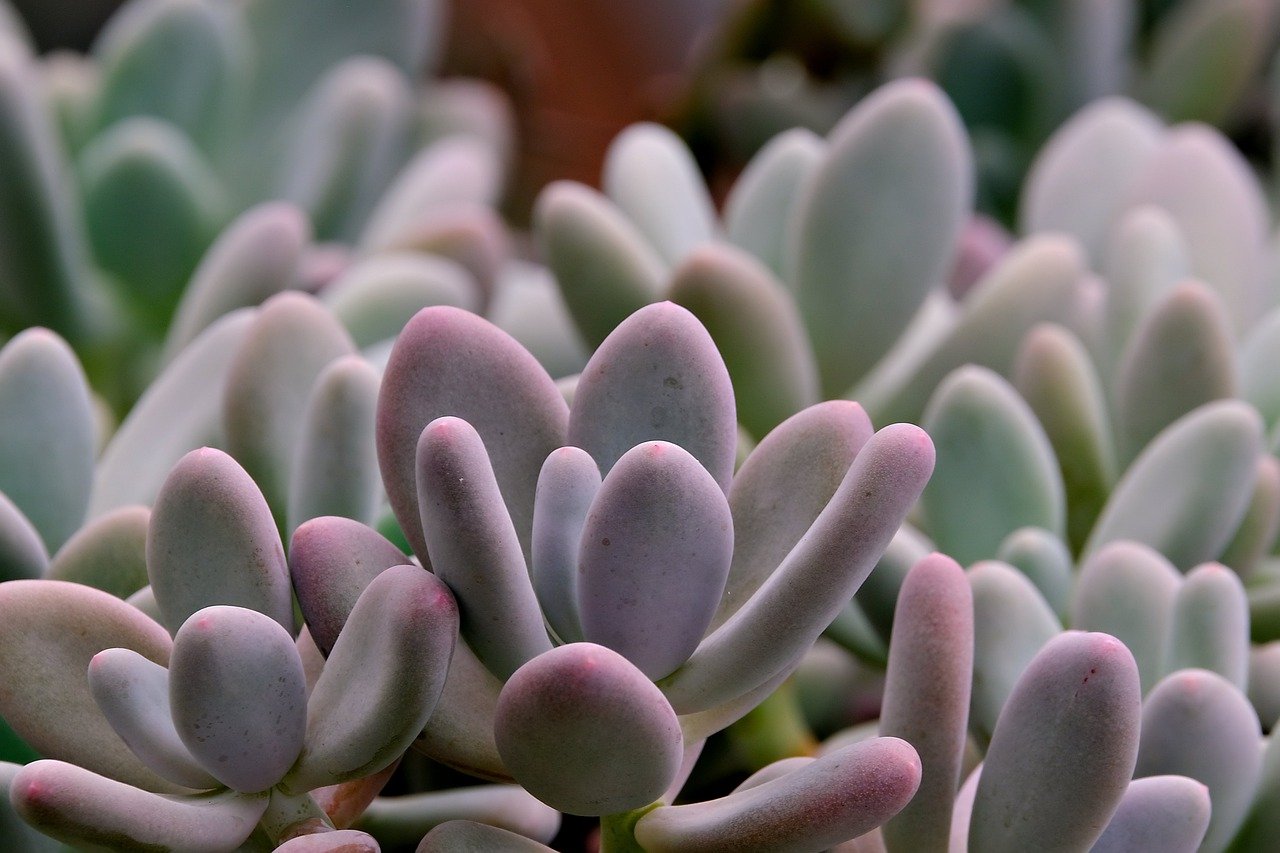
Sunlight Requirements
When it comes to creating a flourishing succulent garden, understanding is absolutely essential. Succulents are known for their ability to store water in their leaves, which makes them incredibly resilient to drought. However, this doesn't mean they can thrive in any lighting condition. In fact, the right amount of sunlight can make all the difference in their growth and overall health. So, how do you determine the optimal lighting for your succulent plants? Let's dive into the details!
Different varieties of succulents have varying needs when it comes to sunlight. Some prefer full sun, while others thrive in partial shade. For instance, popular varieties like Agave and Sedum typically enjoy basking in bright, direct sunlight for several hours a day. On the other hand, species such as Haworthia and Echeveria can become stressed if exposed to too much direct light. This is why knowing your plants is key to their success. You wouldn't wear a wool sweater in the summer heat, right? Similarly, your succulents need to be in the right environment.
To help you better understand the sunlight requirements of different succulent types, here’s a quick reference table:
| Succulent Type | Sunlight Preference | Notes |
|---|---|---|
| Agave | Full Sun | Thrives in bright light; can tolerate heat. |
| Haworthia | Partial Shade | Prefers indirect light; too much sun can cause leaf damage. |
| Echeveria | Bright Indirect Light | Direct sunlight can scorch the leaves. |
| Jade Plant | Full Sun to Partial Shade | Can adapt to various light conditions but prefers bright light. |
Now that you have a better grasp of what your succulents need, let’s talk about how to position them for optimal growth. If you’re growing succulents indoors, placing them near a south-facing window is often ideal. This positioning allows them to soak up the most sunlight throughout the day. However, be cautious of sudden temperature changes that can occur near windows, especially during winter months. On the flip side, outdoor succulents should be placed where they can receive morning sun, which is usually less intense than afternoon sun. Think of it as giving them a gentle wake-up call rather than a scorching midday sunburn!
It’s also crucial to be aware of the signs of insufficient light. If your succulents are stretching towards the light, developing pale leaves, or losing their vibrant color, these could be signs that they’re not getting enough sunlight. In such cases, you might want to consider relocating them to a brighter spot or using grow lights if you’re indoors. Just imagine trying to grow a plant in a dark corner; it would be like trying to run a marathon in a dimly lit room—you’d struggle to find your way!
In summary, understanding the sunlight requirements of your succulents can significantly impact their health and vitality. By paying attention to their specific needs, positioning them correctly, and recognizing signs of distress, you can create a thriving succulent garden that not only looks beautiful but also flourishes in its environment. Remember, a little bit of light goes a long way in the world of succulents!
- How much sunlight do succulents need indoors? Most indoor succulents prefer bright, indirect sunlight for several hours a day. A south-facing window is usually ideal.
- Can succulents survive in low light? While some succulents can tolerate low light, they will likely become leggy and lose their vibrant colors. It's best to provide them with adequate light.
- What should I do if my succulent is getting too much sun? If you notice sunburned leaves or discoloration, move your succulent to a location with less direct sunlight.
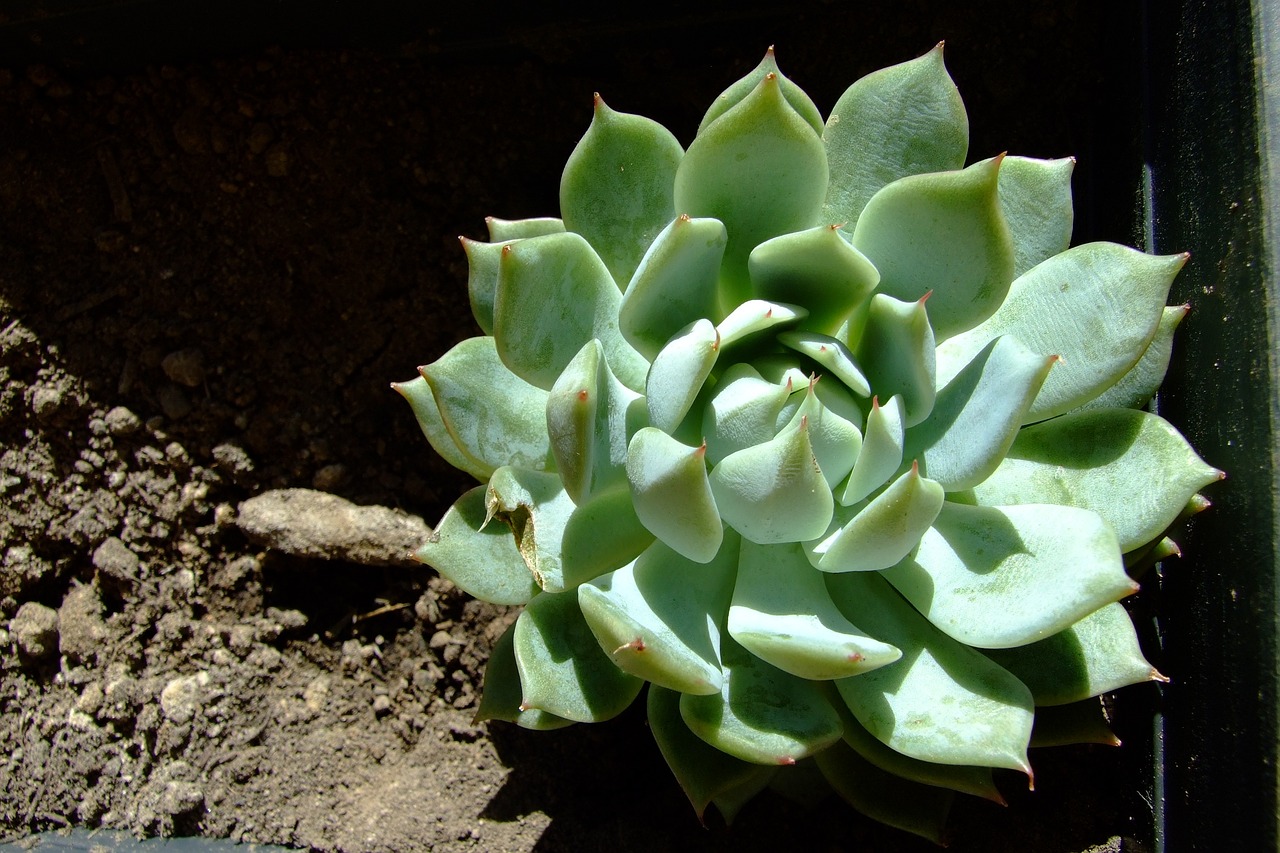
Indoor vs. Outdoor Sunlight
When it comes to growing succulents, understanding the differences in sunlight requirements for indoor and outdoor plants is crucial. Each environment presents unique challenges and opportunities that can greatly affect the health and growth of your succulents. Indoor succulents often thrive in bright, indirect light. This is because, indoors, the light intensity is generally lower, and direct sunlight can scorch the leaves. Consider placing your indoor succulents near a south-facing window where they can soak up the light without being exposed to the harsh midday sun.
On the other hand, outdoor succulents are typically more accustomed to direct sunlight. They can handle intense rays, especially in the morning and late afternoon when the sun is less aggressive. However, it's essential to gradually acclimate outdoor succulents to full sun exposure to avoid sunburn. A good rule of thumb is to start by placing them in partial shade for a week before exposing them to full sunlight.
Here’s a quick comparison table to help you understand the sunlight needs for both indoor and outdoor succulents:
| Aspect | Indoor Succulents | Outdoor Succulents |
|---|---|---|
| Light Intensity | Bright, indirect light | Direct sunlight |
| Sun Exposure Duration | 4-6 hours of indirect light | 6-8 hours of direct light |
| Acclimatization | Not required | Gradual exposure needed |
| Common Issues | Etiolation and leaf drop | Sunburn and dehydration |
It’s also important to recognize the signs of insufficient light in both settings. Indoor succulents may stretch toward the light source, appearing leggy, while outdoor plants might show signs of fading color or stunted growth. Adjusting their positions or adding supplemental lighting indoors can help combat these issues. For outdoor succulents, consider providing some afternoon shade during the hottest months to prevent sunburn. By understanding and catering to the specific sunlight needs of your succulents, you can create a thriving environment for them, whether they’re basking indoors or flourishing outdoors.
- How much sunlight do succulents need indoors? Indoor succulents generally require about 4-6 hours of bright, indirect sunlight each day.
- Can outdoor succulents survive in partial shade? Yes, while outdoor succulents prefer full sun, many can tolerate partial shade, especially during the hottest part of the day.
- What should I do if my indoor succulents are stretching? If your indoor succulents are stretching, they are likely not receiving enough light. Move them closer to a light source or consider using grow lights.
- How can I tell if my outdoor succulents are getting too much sun? Signs of too much sun include sunburned leaves, which may appear brown or crispy at the edges. If you notice this, provide some shade during peak sunlight hours.
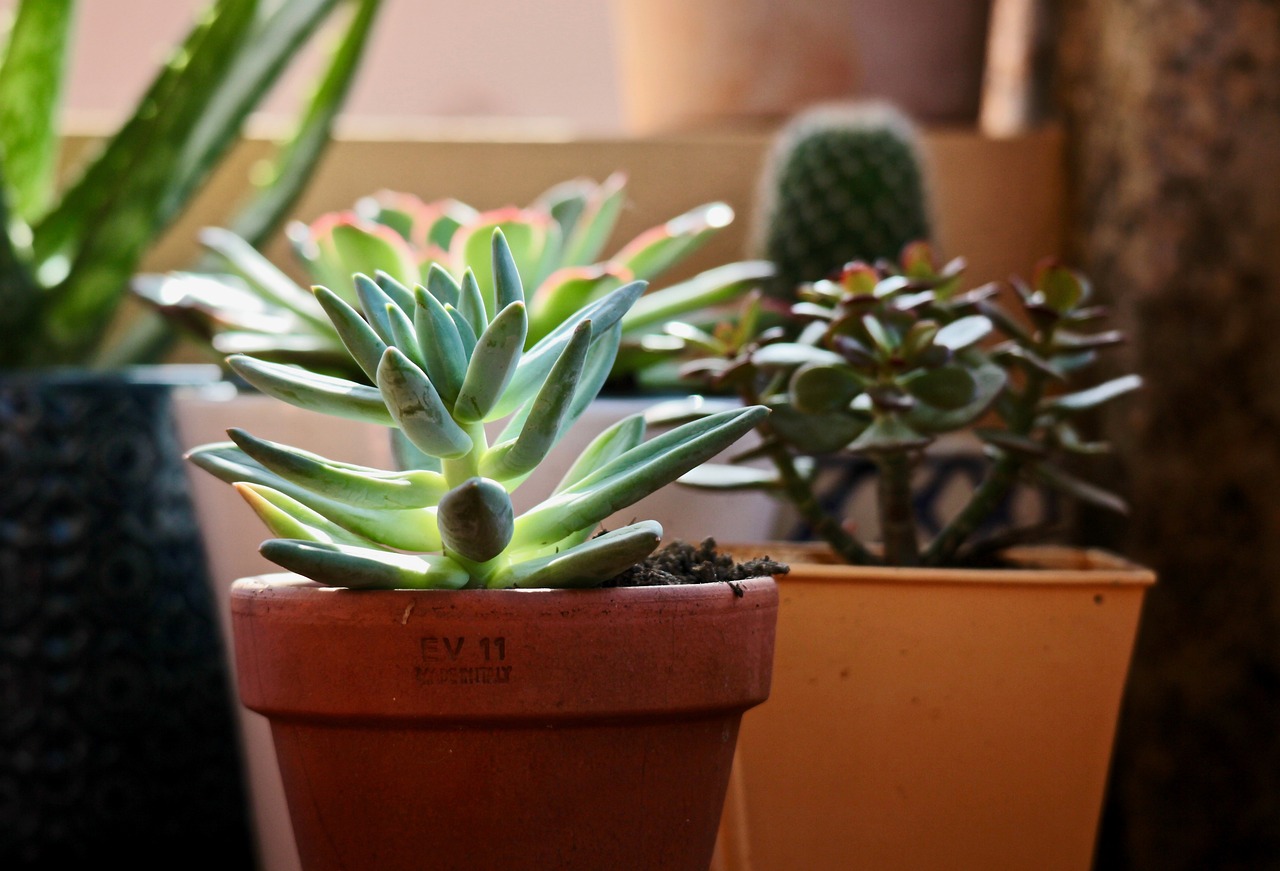
Signs of Insufficient Light
When it comes to nurturing your beloved succulents, light is a key player. Just like us, these plants have their own unique needs, and insufficient light can lead to a whole host of issues. So, how can you tell if your succulents are not getting enough light? Here are some signs to watch out for:
First off, if you notice your succulents stretching or becoming leggy, that's a clear indicator they are reaching for the light. This phenomenon occurs when the plants grow taller with longer stems in an attempt to find more sunlight. Instead of the compact, vibrant look you desire, your plants may appear weak and elongated. Remember, healthy succulents should be stout and well-proportioned, not stretching awkwardly toward the light source.
Another sign to keep an eye on is the fading color of your succulents. Many varieties boast stunning hues, but when they start to lose their vibrancy and turn a dull green or pale, it's a cry for help. Inadequate light can cause your plants to lose their natural pigments, leading to a lifeless appearance. If your succulents are looking washed out, it might be time to reconsider their lighting situation.
Additionally, you might notice that your succulents are producing fewer leaves or flowers. Insufficient light can hinder growth and flowering, leaving your plants looking sparse. If you’re used to seeing your succulents flourish but now they seem stagnant, it’s a strong hint that they need more light to thrive.
Finally, keep an eye out for any signs of rot or mushiness. While overwatering is often the culprit, poor lighting can exacerbate the issue. Succulents that aren’t getting enough light may retain excess moisture, leading to root rot. If you notice your plants feeling soft or squishy, it’s time to reassess their light exposure.
In summary, recognizing these signs can help you maintain a healthy succulent garden. If you see your plants stretching, losing color, producing fewer leaves, or showing signs of rot, consider adjusting their light conditions. Remember, a little attention goes a long way in keeping your succulents happy and vibrant!
- How much light do succulents need? Most succulents thrive in bright, indirect sunlight for several hours a day. Direct sunlight can be too harsh, especially for certain varieties.
- Can I use artificial light for my succulents? Absolutely! Grow lights can be an excellent alternative, especially in low-light environments. Just ensure they mimic natural sunlight.
- What should I do if my succulents are not getting enough light? Move them closer to a window or consider using grow lights. Regularly monitor their health to see if they improve.
- How can I tell if my succulent is getting too much light? If your succulent's leaves are turning brown or crispy, it might be getting too much direct sunlight. Adjust their position accordingly.
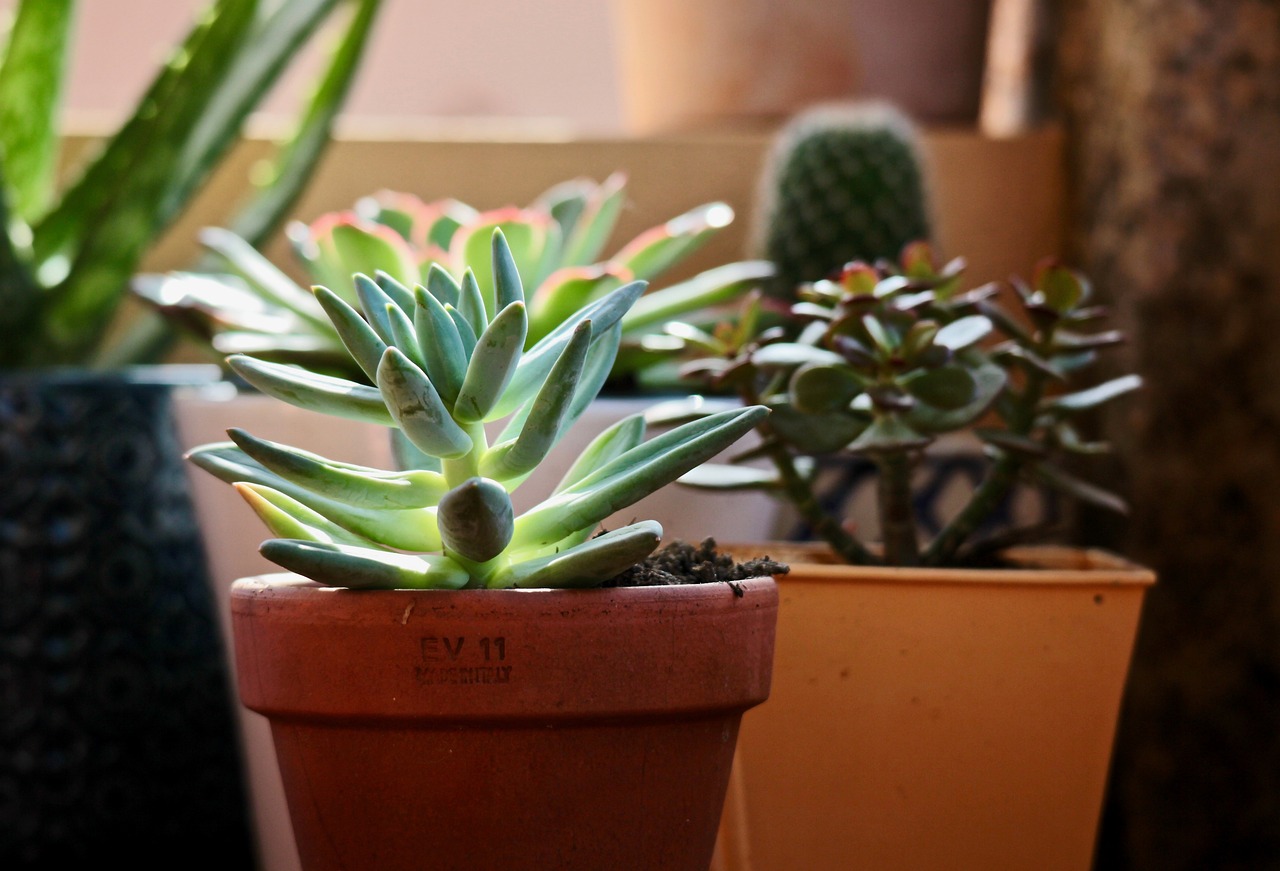
Fertilizing Your Succulents
Fertilizing your succulents correctly can significantly enhance their growth and overall health. While succulents are known for their resilience, they still benefit from a little extra love in the form of nutrients. The key is to understand that less is often more when it comes to fertilizing these unique plants. Over-fertilizing can lead to burnt roots and stunted growth, so it's important to strike the right balance. So, what types of fertilizers are best for your succulent friends? Let's dive in!
When it comes to choosing fertilizers, you have two primary options: organic and synthetic. Organic fertilizers, such as compost or well-rotted manure, release nutrients slowly and improve soil health over time. On the other hand, synthetic fertilizers provide a quick nutrient boost but can sometimes lead to nutrient burn if not used correctly. It's essential to select a fertilizer with a balanced nutrient ratio, such as 10-10-10, which ensures that your succulents receive equal parts of nitrogen, phosphorus, and potassium.
To get the most out of your fertilizing routine, consider establishing a fertilization schedule. Generally, it's best to fertilize succulents during their active growing season, which typically occurs in the spring and summer months. A good rule of thumb is to fertilize once a month, but be sure to dilute the fertilizer to half the recommended strength to avoid overwhelming your plants. During the fall and winter, when succulents enter a dormant phase, it's wise to reduce or even eliminate fertilization altogether.
Here's a quick reference table to help you understand the best practices for fertilizing your succulents:
| Fertilization Aspect | Recommendation |
|---|---|
| Type of Fertilizer | Balanced organic or synthetic (e.g., 10-10-10) |
| Frequency | Once a month during active growth (spring/summer) |
| Strength | Dilute to half strength to prevent burning |
| Fall/Winter Care | Reduce or stop fertilization |
It's also important to monitor your succulents after fertilization. If you notice any signs of distress, such as yellowing leaves or stunted growth, it may be time to adjust your fertilization approach. Remember, every plant is unique, and what works for one may not work for another. Keep an eye on your plants, and don't hesitate to experiment a little to find the perfect routine!
- How often should I fertilize my succulents? - Generally, once a month during the growing season is ideal.
- Can I use regular houseplant fertilizer for my succulents? - Yes, but make sure to dilute it to half strength to avoid over-fertilization.
- What are the signs of over-fertilization? - Look for yellowing leaves, burnt tips, or stunted growth.
- Is it necessary to fertilize my succulents? - While not always necessary, fertilizing can promote healthier growth, especially in nutrient-poor soil.
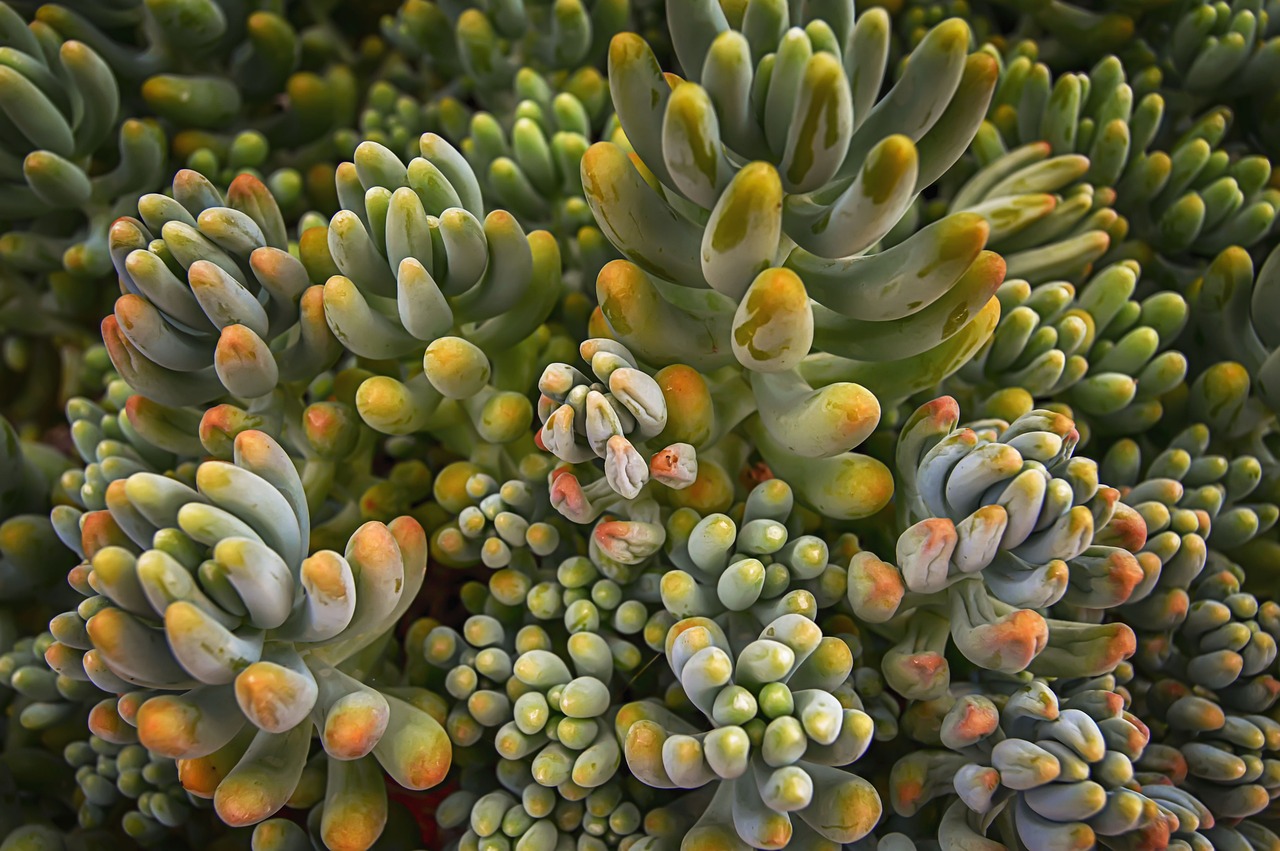
Types of Fertilizers
When it comes to nurturing your succulents, choosing the right type of fertilizer is crucial. Just like humans need a balanced diet to thrive, your plants also benefit from specific nutrients. There are two main categories of fertilizers: organic and synthetic. Each has its own advantages and can significantly impact the health and growth of your succulents.
Organic fertilizers are derived from natural sources, such as compost, manure, and bone meal. They release nutrients slowly, which means they provide a steady supply of food for your plants over time. This slow release is particularly beneficial for succulents, as it helps prevent the risk of over-fertilization, which can lead to root burn. Additionally, organic fertilizers improve soil structure and enhance microbial activity, creating a more balanced ecosystem in your garden.
On the other hand, synthetic fertilizers are chemically formulated to deliver nutrients quickly. They often contain a mix of nitrogen, phosphorus, and potassium, which are essential for plant growth. While these fertilizers can provide a rapid boost to your succulents, they require careful application. Overuse can lead to nutrient buildup in the soil, potentially harming your plants. Therefore, if you choose synthetic fertilizers, it’s essential to follow the manufacturer’s instructions and apply them sparingly.
Here’s a quick comparison to help you decide:
| Type | Advantages | Disadvantages |
|---|---|---|
| Organic |
|
|
| Synthetic |
|
|
Ultimately, the choice between organic and synthetic fertilizers depends on your gardening style and the specific needs of your succulents. Many gardeners opt for a combination of both, using organic fertilizers for long-term health and synthetic options for quick fixes. Just remember, moderation is key! A little care and attention will ensure your succulent garden remains vibrant and flourishing.
Q: How often should I fertilize my succulents?
A: Generally, fertilizing once during the growing season (spring and summer) is sufficient. However, you can adjust based on your plants' needs and the type of fertilizer used.
Q: Can I use regular houseplant fertilizer for my succulents?
A: While you can use houseplant fertilizer, it's best to choose a fertilizer specifically formulated for succulents to meet their unique nutrient requirements.
Q: What signs indicate that my succulents need fertilization?
A: Signs include slow growth, pale leaves, or a lack of flowering. If your plants appear unhealthy despite proper care, it may be time to fertilize.

Fertilization Schedule
Establishing a proper is essential for the optimal growth and health of your succulents. Just like humans, succulents need nourishment to thrive, and knowing when and how to feed them can make all the difference. Generally, the best time to fertilize your succulents is during their active growing season, which typically spans from spring to early fall. During this time, your plants are eager to soak up nutrients to fuel their growth.
To create an effective fertilization schedule, consider the following guidelines:
- Frequency: Fertilize your succulents every 4 to 6 weeks during the growing season. This regular feeding helps ensure that they receive a steady supply of nutrients.
- Type of Fertilizer: Use a balanced, water-soluble fertilizer diluted to half strength. An NPK ratio of 2-7-7 or similar is ideal, as it provides the essential macronutrients without overwhelming your plants.
- Application Method: When applying fertilizer, make sure to water your plants first. This helps prevent root burn and ensures that the nutrients are absorbed more effectively.
As the seasons change, so should your fertilization approach. During the winter months, succulents enter a dormant phase, and fertilization should be halted. This is because they require significantly less nutrients during this time. Think of it as giving your plants a well-deserved break!
To summarize, here is a quick reference table for your fertilization schedule:
| Season | Fertilization Frequency | Fertilizer Type |
|---|---|---|
| Spring to Early Fall | Every 4-6 weeks | Water-soluble, diluted |
| Winter | No fertilization | N/A |
By following this fertilization schedule, you can help your succulents grow strong and healthy, ensuring they remain vibrant and beautiful throughout the year. Remember, the key is to observe your plants and adjust your care routine as necessary. Happy gardening!
Q: Can I use regular garden fertilizer for succulents?
A: It's best to use a fertilizer specifically formulated for succulents or cacti, as they have different nutrient needs compared to regular garden plants.
Q: How do I know if I’m over-fertilizing my succulents?
A: Signs of over-fertilization include yellowing leaves, stunted growth, and a white crust on the soil surface. If you notice these symptoms, reduce the frequency of fertilization.
Q: Is it necessary to fertilize my succulents if they are in high-quality soil?
A: While high-quality soil can provide some nutrients, regular fertilization during the growing season helps ensure your succulents receive all the necessary elements for optimal growth.
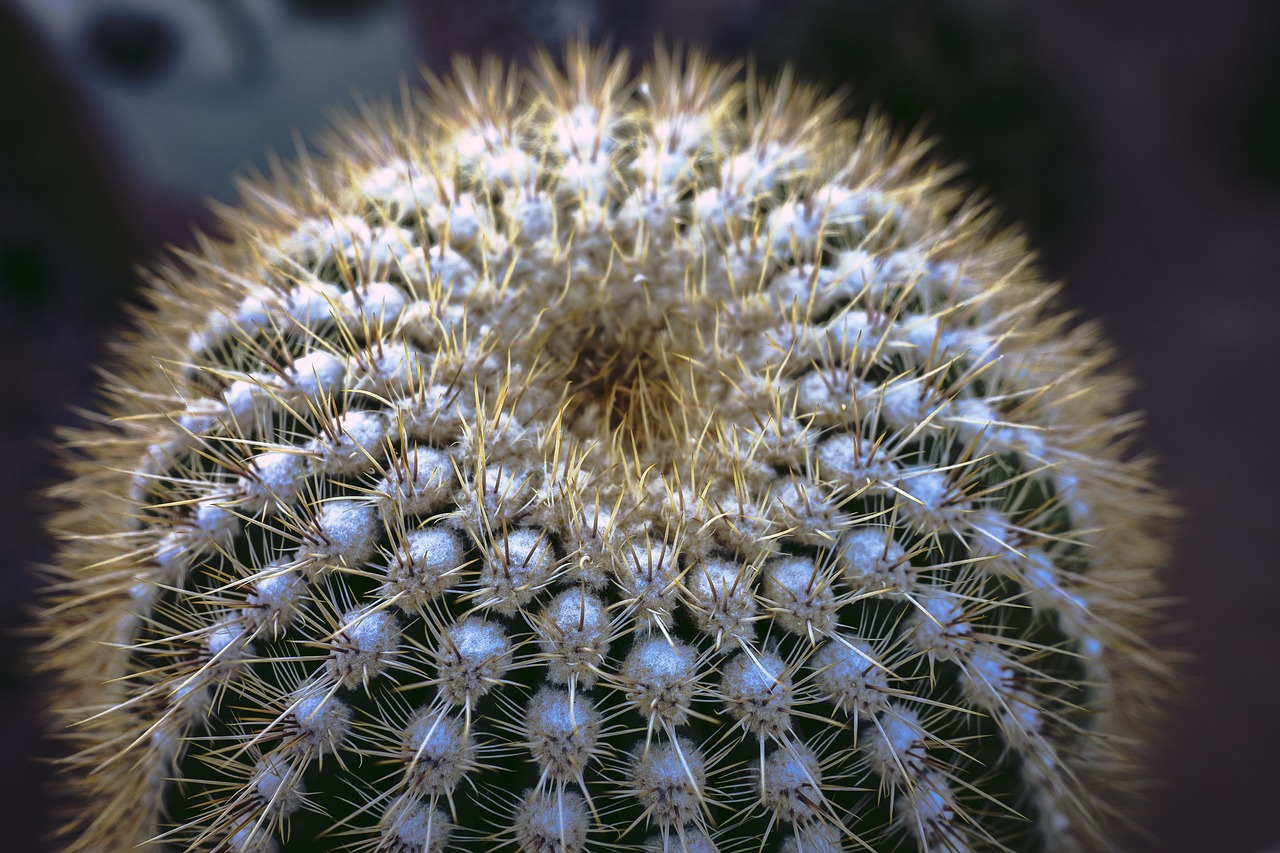
Common Pests and Diseases
When it comes to maintaining a thriving succulent garden, one of the biggest challenges you might face is dealing with pests and diseases. These little invaders can wreak havoc on your plants if not managed promptly. But don't worry! With a little knowledge and vigilance, you can keep your succulent collection healthy and vibrant.
First, let’s talk about the most common pests that tend to target succulents. Mealybugs, aphids, and spider mites are frequent offenders. Mealybugs are particularly notorious; they appear as small, white cottony masses on your plants. If you notice these pests, it's essential to act quickly. A simple solution is to wipe them off with a cotton swab dipped in rubbing alcohol. This method not only removes them but also prevents them from returning.
Next up are aphids, which are tiny, green or black insects that cluster on the undersides of leaves. They can be a bit tricky to spot, but if you notice your plants looking a bit wilted or stunted, it might be time to check for these little critters. A strong blast of water can dislodge them, or you can use insecticidal soap for a more targeted approach.
Spider mites, on the other hand, are almost invisible to the naked eye but leave behind a telltale fine webbing. If you see this webbing, it’s a sure sign that spider mites have invaded your garden. Increase the humidity around your plants and consider using a miticide to keep these pests at bay.
Now, let’s shift gears and discuss some common diseases that can affect your succulents. Root rot is a significant concern, especially if you tend to overwater your plants. This fungal disease thrives in soggy soil and can cause your plants to wilt and die. To prevent root rot, always ensure that your pots have adequate drainage and that you allow the soil to dry out completely between waterings.
Another disease to watch for is powdery mildew, which manifests as a white, powdery substance on the leaves. This fungus thrives in humid conditions and can spread quickly. If you notice powdery mildew, you can treat it with a mixture of water and baking soda or by using a commercial fungicide.
To help you keep track of the pests and diseases that may affect your succulents, here’s a quick reference table:
| Pest/Disease | Signs | Treatment |
|---|---|---|
| Mealybugs | Cottony masses on leaves | Rubbing alcohol on a cotton swab |
| Aphids | Wilting or stunted growth | Blast of water or insecticidal soap |
| Spider Mites | Fine webbing on leaves | Increase humidity, use miticide |
| Root Rot | Wilting plants, soggy soil | Improve drainage, reduce watering |
| Powdery Mildew | White powdery spots on leaves | Water and baking soda mixture or fungicide |
By staying alert and knowing what to look for, you can effectively manage these common pests and diseases. Regularly inspecting your plants and maintaining proper care practices will help you enjoy a flourishing succulent garden. Remember, a little prevention goes a long way in keeping your plants healthy!
Q: How can I prevent pests from invading my succulent garden?
A: Regularly inspect your plants for any signs of pests, and maintain good air circulation around them. Keeping your garden clean and removing any dead leaves can also help deter pests.
Q: What should I do if my succulent has root rot?
A: If you suspect root rot, carefully remove the plant from its pot and inspect the roots. Trim away any black or mushy roots. Repot the plant in fresh, dry soil and ensure that the pot has good drainage.
Q: Can I use natural remedies for pest control?
A: Yes! Many gardeners prefer natural remedies such as neem oil, insecticidal soap, or even a mixture of water and dish soap to manage pests. These options are less harmful to beneficial insects and the environment.
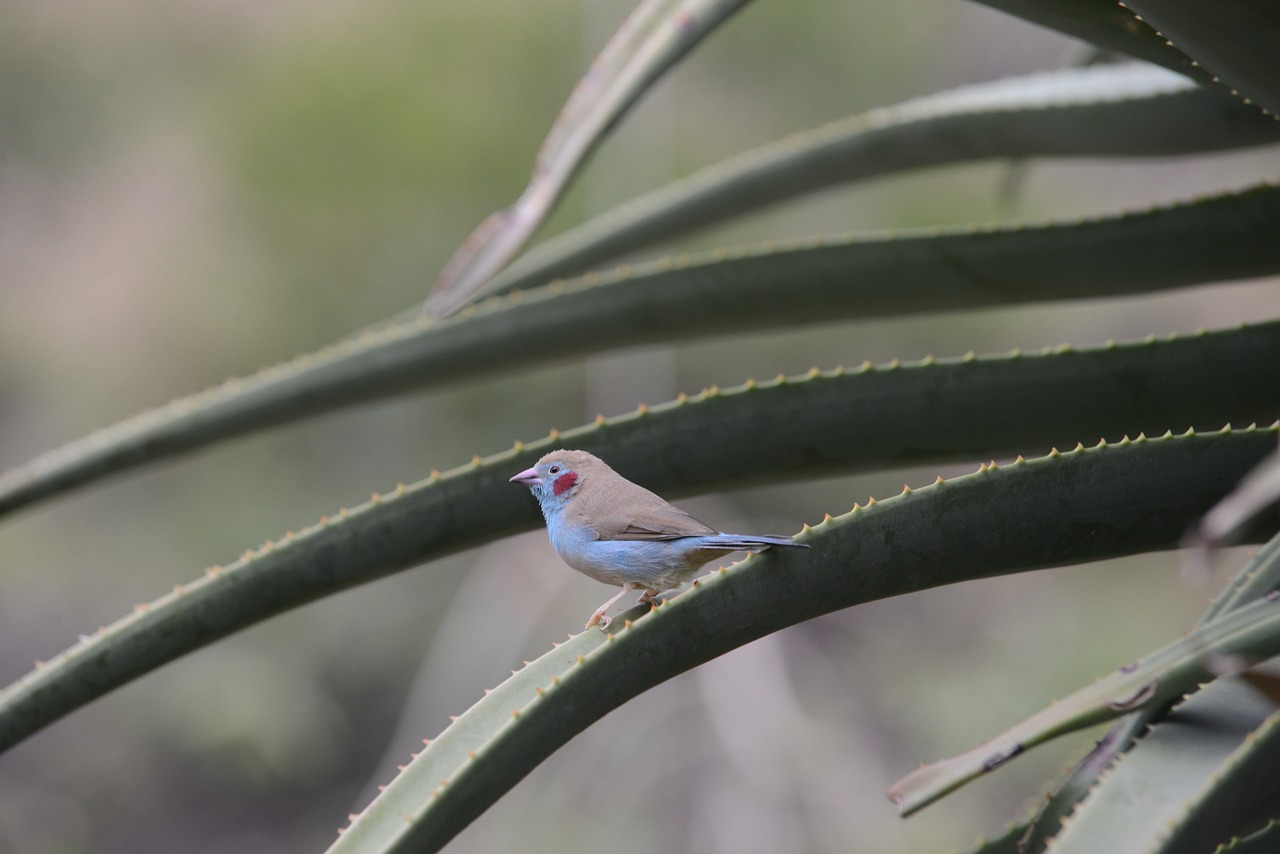
Pest Identification
Identifying pests in your succulent garden is an essential skill that every gardener should master. These little intruders can wreak havoc on your beloved plants if left unchecked. Just like a detective solving a mystery, you'll need to keep an eye out for signs of trouble. Common pests that affect succulents include mealybugs, aphids, and spider mites. Each of these pests has unique characteristics and symptoms that can help you identify them early on.
Mealybugs, for instance, are small, white, cotton-like insects that often cluster in the leaf axils or on the stems of succulents. They can be easily mistaken for bits of cotton or mold, but upon closer inspection, you’ll notice their movement. If you see sticky residue or a sooty mold on your plants, it could be a sign of mealybugs feeding on your succulents.
Aphids are another common pest, usually found in groups on new growth or the undersides of leaves. These tiny, green or black insects can cause significant damage by sucking the sap from your plants, leading to distorted growth and yellowing leaves. If you notice your succulents looking a bit droopy or discolored, it’s time to inspect them closely for these pesky invaders.
Spider mites are more challenging to spot since they are incredibly small, but their presence often becomes evident through the damage they cause. Look for fine webbing on your plants or tiny yellow or white spots on the leaves. If you see these signs, it's crucial to act quickly, as spider mites can multiply rapidly and devastate your garden in no time.
To help you better understand these pests, here’s a quick comparison table:
| Pest | Appearance | Symptoms |
|---|---|---|
| Mealybugs | White, cotton-like clusters | Sticky residue, sooty mold |
| Aphids | Small, green or black insects | Distorted growth, yellowing leaves |
| Spider Mites | Very tiny, often red or yellow | Fine webbing, yellow or white spots |
By familiarizing yourself with these common pests and their symptoms, you’ll be better equipped to protect your succulent garden. Regularly inspecting your plants and acting swiftly at the first sign of trouble can make all the difference in maintaining a healthy, thriving garden. Remember, prevention is always better than cure, so keep your eyes peeled and your plants happy!
1. How do I know if my succulents have pests?
Look for unusual spots, webbing, or sticky residue on your plants. Inspect the undersides of leaves and the base of stems for signs of infestation.
2. Can I use natural remedies to get rid of pests?
Yes! Natural remedies like neem oil or insecticidal soap can be effective against common pests without harming your plants.
3. How often should I check my succulents for pests?
Regular inspections every week or two can help you catch any potential infestations early, ensuring your plants stay healthy.
4. What should I do if I find pests on my succulents?
Isolate the affected plants and treat them immediately with appropriate pest control methods to prevent the infestation from spreading.
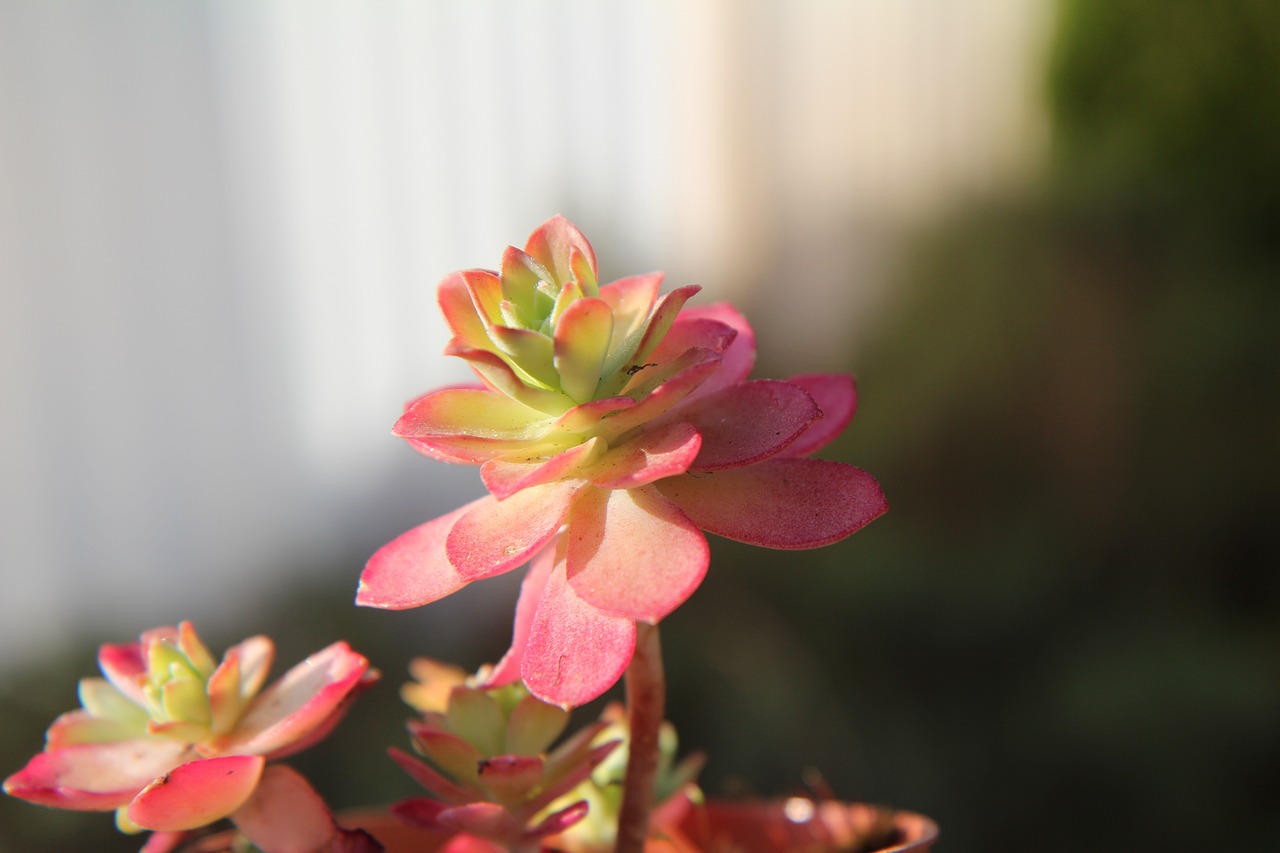
Disease Management
Managing diseases in your succulent garden is crucial for maintaining the overall health and vibrancy of your plants. Just like a well-oiled machine needs regular maintenance, your succulents require vigilance against potential threats that can hinder their growth. Diseases can sneak up on you, often showing their ugly heads when you least expect it. Therefore, understanding how to identify, prevent, and treat these issues is essential for any succulent enthusiast.
One of the most common diseases that affect succulents is root rot, which typically occurs when the soil retains too much moisture. This condition can be likened to a slow poison, gradually suffocating your plants' roots until they can no longer absorb the nutrients they need. To prevent root rot, ensure that your soil has excellent drainage and that you are not overwatering your succulents. If you notice yellowing leaves or a mushy texture at the base of the plant, it's time to take action. You may need to remove the plant from its pot, trim away the affected roots, and repot it in fresh, dry soil.
Another common issue is fungal infections, which can manifest as dark spots or a fuzzy mold on your succulents. These infections thrive in humid environments, so it's essential to keep your plants in a well-ventilated area. If you spot any signs of fungal growth, you can treat it with a fungicide or a homemade solution of diluted hydrogen peroxide. Just remember, prevention is always better than cure! Regularly inspecting your plants and ensuring they have adequate airflow can go a long way in keeping these pesky fungi at bay.
Additionally, pests can also contribute to disease spread in your succulent garden. Common culprits like mealybugs and aphids can weaken your plants, making them more susceptible to diseases. To combat these pests, consider using insecticidal soap or neem oil. These treatments can be effective without causing harm to your plants, making them a go-to option for many gardeners. As with disease management, early detection is key—regularly check the undersides of leaves and the soil for any signs of infestation.
To summarize, here are some quick tips for effective disease management in your succulent garden:
- Ensure proper drainage to prevent root rot.
- Keep your plants in a well-ventilated area to avoid fungal infections.
- Regularly inspect for pests and treat them promptly.
- Use fungicides or homemade solutions for treating infections.
- Maintain a consistent watering schedule to avoid overwatering.
By implementing these disease management strategies, you'll set your succulent garden up for success. Remember, a healthy plant is a happy plant, and with a little bit of care and attention, your succulents will thrive beautifully. Now, let’s move on to some of the frequently asked questions that many succulent lovers have!
Q: How can I tell if my succulent is sick?
A: Look for signs such as yellowing leaves, wilting, or unusual spots. These can indicate issues like overwatering or pest infestations.
Q: What should I do if I notice root rot?
A: Remove the plant from its pot, trim away the affected roots, and repot it in fresh, dry soil with good drainage.
Q: Can I use regular fertilizer on my succulents?
A: It's best to use a fertilizer specifically designed for succulents. These fertilizers provide the right nutrients without overwhelming the plants.
Q: How often should I check my plants for pests?
A: Ideally, you should inspect your plants at least once a week to catch any issues early before they escalate.
Q: Are there any natural remedies for treating pests?
A: Yes! Insecticidal soap and neem oil are effective natural remedies for managing pests without harming your plants.
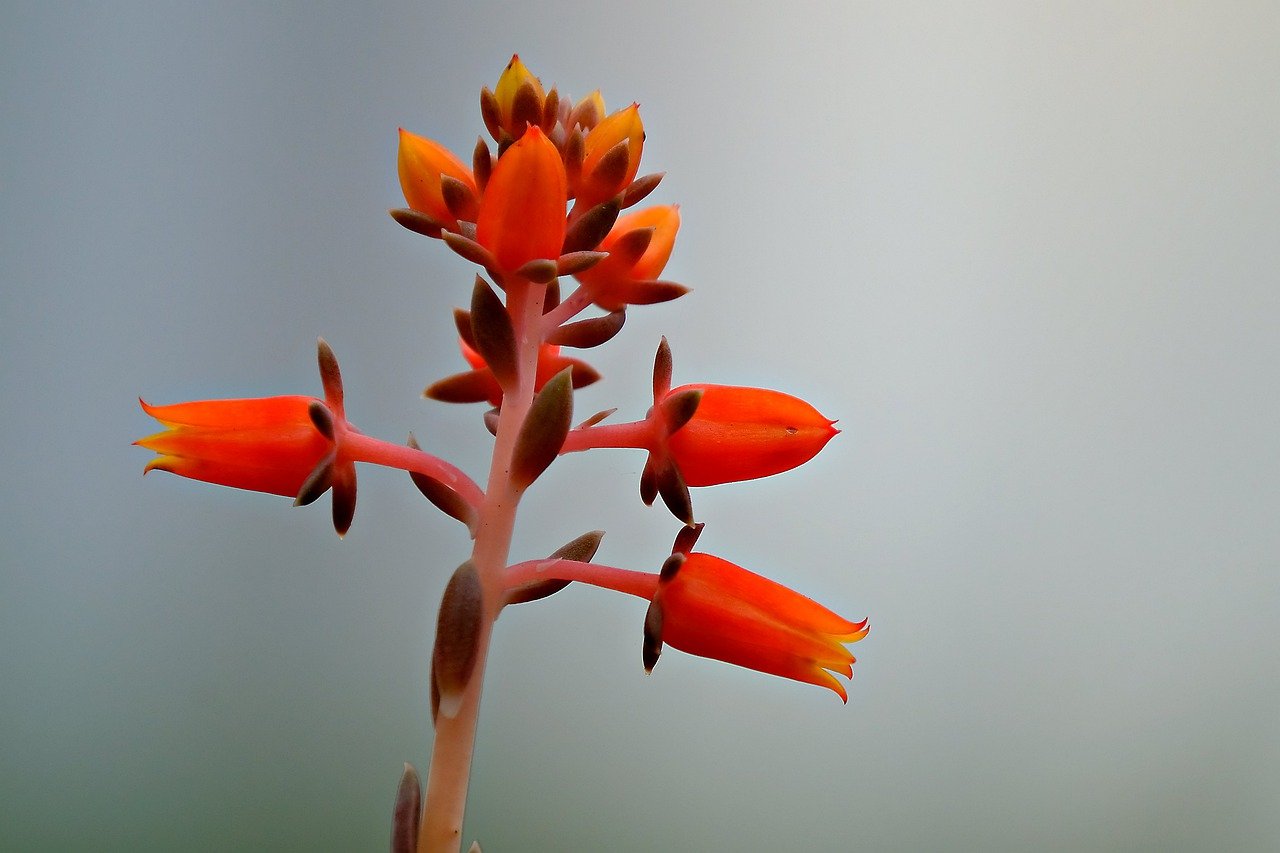
Designing Your Succulent Garden
Designing a succulent garden is more than just planting a few cacti in a pot; it’s an opportunity to express your creativity and bring a touch of nature into your space. Whether you’re working with a small balcony or a sprawling backyard, the way you arrange your succulents can significantly impact their aesthetic and health. Imagine your garden as a canvas, where each succulent is a brush stroke contributing to a beautiful masterpiece. So, how do you get started?
First and foremost, consider the layout. A well-planned layout can create harmony and balance in your garden. You might choose to go for a symmetrical design, which often feels more formal, or an asymmetrical one that gives a more relaxed and natural vibe. To help visualize your design, sketch it out on paper or use garden design software. It’s like drafting a blueprint for your succulent paradise!
Next, think about color and texture combinations. Succulents come in a variety of colors, shapes, and sizes, which means you have a lot of options to play with. Mixing different types can create a stunning visual contrast. For example, pairing the soft, rounded leaves of a Jade plant with the spiky texture of an Agave can add depth and intrigue to your garden. You can also consider the color palette: vibrant greens can be complemented with purples, blues, and even reds. The key is to create a cohesive look that draws the eye and keeps it moving throughout the garden.
When it comes to container gardening, the possibilities are endless! Containers allow you to be flexible and creative. You can use traditional pots, hanging baskets, or even repurposed items like old teacups or wooden crates. Just make sure whatever you choose has adequate drainage holes to prevent water from pooling at the bottom, which can lead to root rot. The size of your container should also match the size of the succulent; larger plants need more space to grow, while smaller ones can thrive in tighter quarters.
To help you visualize some great design ideas, here’s a simple table that outlines various container options and their benefits:
| Container Type | Benefits |
|---|---|
| Clay Pots | Good air circulation and moisture control |
| Plastic Pots | Lightweight and easy to move |
| Hanging Baskets | Great for vertical gardening and saving space |
| Wooden Crates | Rustic aesthetic and good drainage |
Lastly, don't forget about the importance of seasonal changes in your design. As the seasons shift, so do the needs of your plants. For instance, during the summer, you may want to position your succulents to receive more shade to protect them from the harsh sun, while in winter, they might benefit from more sunlight. Keeping an eye on your garden and adjusting its layout accordingly can help maintain its beauty throughout the year.
In conclusion, designing your succulent garden is a fun and rewarding process that allows you to unleash your creativity. Remember to consider layout, color and texture combinations, container choices, and seasonal adjustments as you embark on this journey. With a little planning and imagination, your succulent garden can become a stunning focal point in your home or outdoor space.
- How often should I change the design of my succulent garden? It's a good idea to refresh your design every season to keep things interesting and to accommodate the changing needs of your plants.
- Can I mix different types of succulents in one container? Yes, mixing different types of succulents can create a beautiful and dynamic display, just ensure they have similar care requirements.
- What are the best containers for outdoor succulent gardens? Clay and wooden containers are great for outdoor gardens as they allow for good drainage and are durable against the elements.
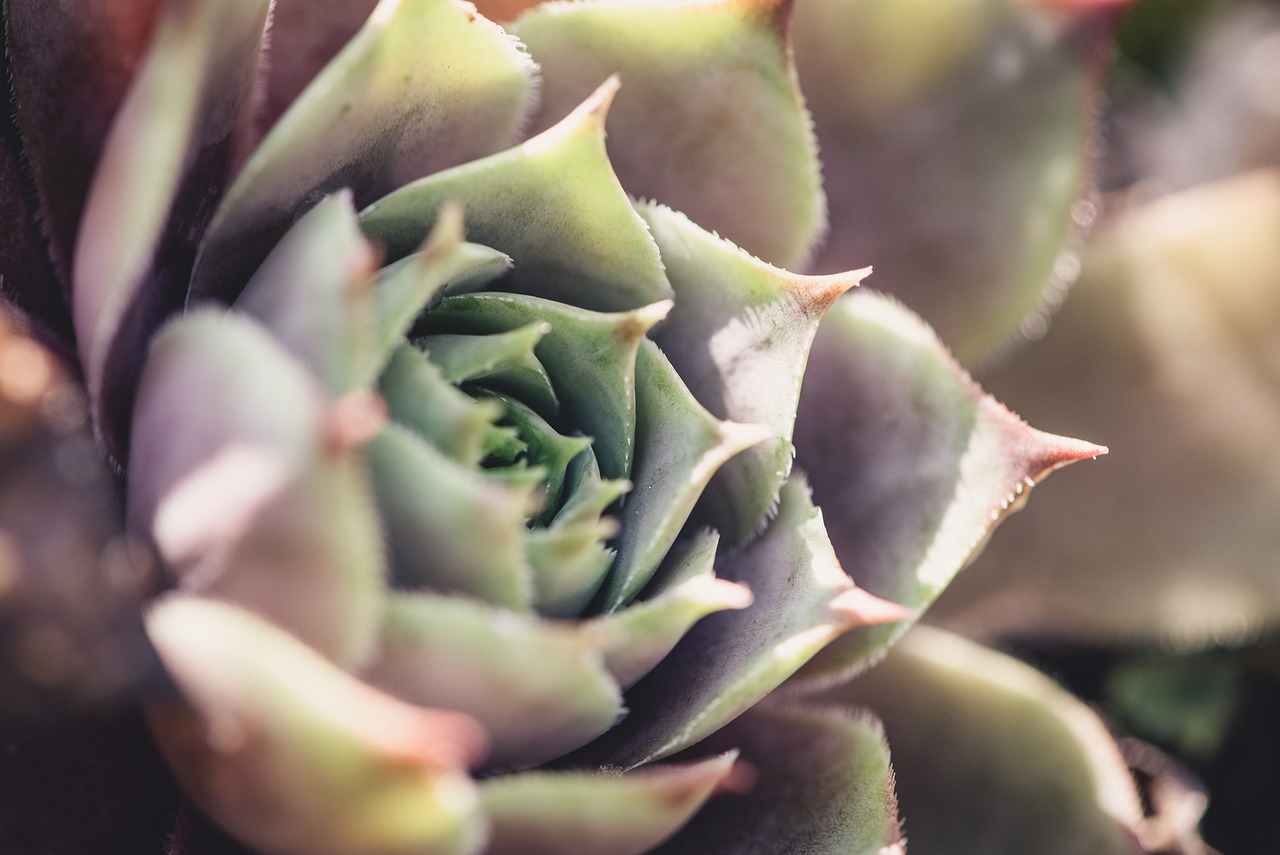
Container Gardening
Container gardening is a fantastic way to cultivate your succulent collection, especially if you're limited on space or want to add a splash of greenery to your indoor areas. The beauty of using containers is that they offer versatility; you can mix and match different succulent varieties, allowing for creative expression while also meeting the specific needs of each plant. When selecting containers, consider factors such as size, material, and drainage capabilities, as these will significantly impact the health of your succulents.
Choosing the right container is crucial. For instance, terracotta pots are popular among succulent enthusiasts due to their breathability, which helps prevent overwatering. However, plastic pots are lightweight and retain moisture longer, making them suitable for beginners. To help you make an informed choice, here’s a quick comparison:
| Container Type | Pros | Cons |
|---|---|---|
| Terracotta | Breathable, good for drainage | Can dry out quickly |
| Plastic | Lightweight, moisture-retentive | Less breathable |
| Ceramic | Attractive, sturdy | Heavy, can retain too much moisture |
Once you've selected your containers, it's essential to consider the arrangement of your succulents. Grouping plants with similar water and light needs can simplify care and create a visually appealing display. You might want to use taller varieties in the back and shorter ones in the front, creating a layered effect that draws the eye. Additionally, mixing different textures and colors can give your garden a lively, dynamic look. Imagine a vibrant arrangement of rosettes, trailing plants, and spiky varieties all cohabiting in a single container—it's like a miniature ecosystem right in your living room!
Don't forget about drainage! Always ensure that your containers have drainage holes at the bottom. This is vital because succulents are particularly sensitive to overwatering, which can lead to root rot. If you come across a beautiful container that lacks drainage holes, you can still use it by placing a layer of pebbles or gravel at the bottom to help manage excess water. This simple trick can save your succulents from drowning in soggy soil.
In conclusion, container gardening opens up a world of possibilities for succulent enthusiasts. Whether you're a novice or a seasoned gardener, the joy of creating your own succulent display is immensely rewarding. So gather your containers, choose your plants, and let your creativity run wild!
- What type of soil should I use for my succulents in containers? It's best to use a well-draining soil mix specifically designed for succulents or cacti. You can also create your own by mixing regular potting soil with sand or perlite.
- How often should I water my container succulents? Watering frequency depends on the environment, but a general rule is to water when the top inch of soil feels dry. Always ensure that excess water can drain out.
- Can I grow succulents indoors? Absolutely! Many succulents thrive indoors as long as they receive enough sunlight. Place them near a south-facing window for optimal growth.
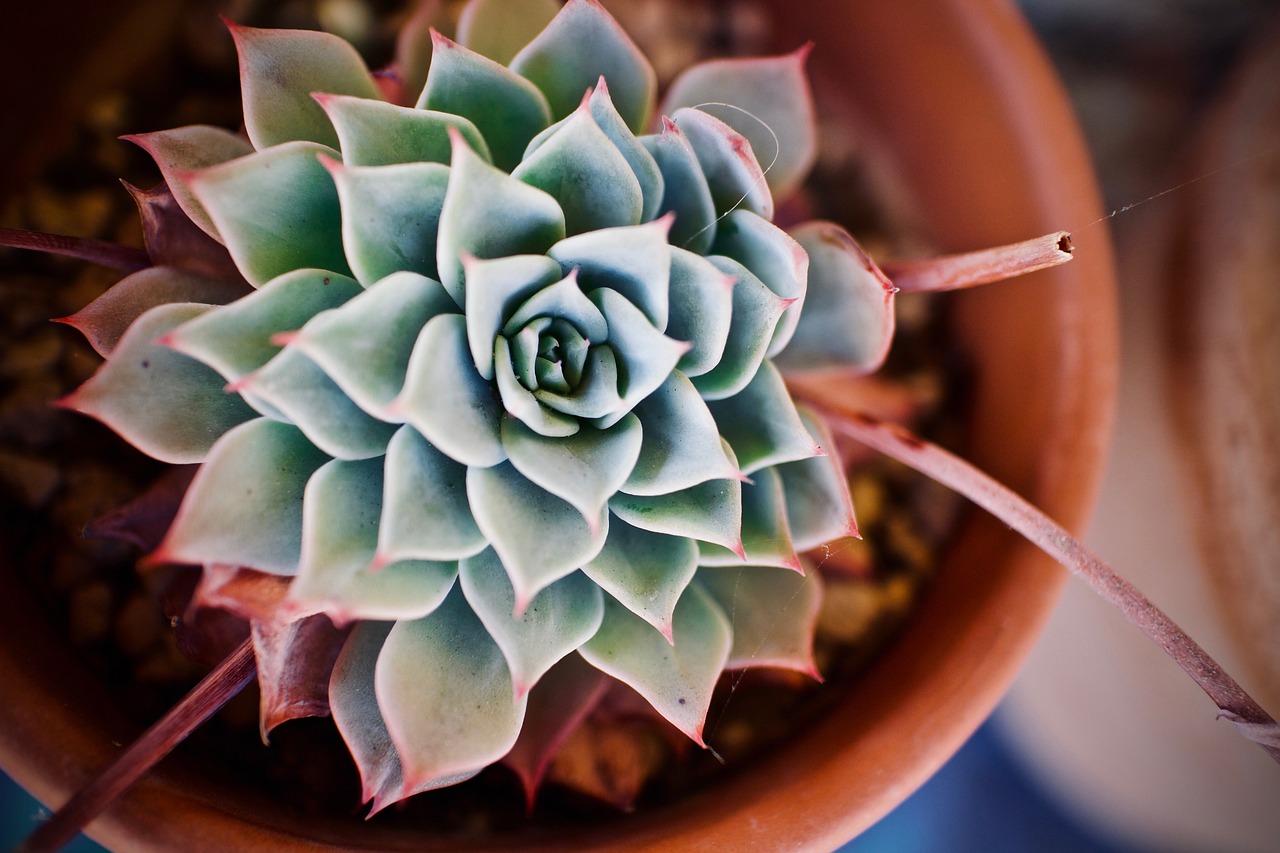
Color and Texture Combinations
When it comes to designing a succulent garden, play a pivotal role in creating a visually stunning display. Imagine walking into a space where the vibrant greens of Echeverias meet the rich purples of Aeoniums, each plant boasting unique shapes and textures. This delightful contrast not only catches the eye but also brings life to your garden, making it a true work of art.
To achieve an appealing arrangement, consider the following factors:
- Color Palette: Choose a color scheme that resonates with your personal style. You might opt for a monochromatic look using varying shades of green or go for a more eclectic mix with pops of red, yellow, and blue.
- Texture Variety: Mixing different textures adds depth to your garden. Combine the smooth, plump leaves of a jade plant with the spiky edges of an Agave. This contrast creates a dynamic visual experience.
- Size and Shape: Varying the sizes and shapes of your succulents can also enhance the overall aesthetic. Tall, upright plants like Aloe vera can serve as focal points, while trailing varieties like String of Hearts can soften edges and add layers.
When selecting your plants, think about how they will interact with one another. For example, pairing a rosette-forming succulent like Echeveria with a cascading plant like Burro's Tail creates a delightful juxtaposition that draws the eye downward, inviting exploration. Additionally, consider the seasonal changes in colors. Some succulents change hues with the seasons, adding a dynamic element to your garden.
Another effective strategy is to incorporate contrasting colors. For instance, the bright green leaves of a Haworthia can be beautifully complemented by the deep red tips of a Graptopetalum. This not only enhances visual interest but also highlights the unique characteristics of each plant. Don't be afraid to experiment with different combinations until you find the perfect match that speaks to you.
Lastly, consider the use of decorative pots and containers. A simple, neutral pot can make the colors of your succulents pop, while a textured pot can add another layer of interest to your display. The right container can transform your succulent garden into a stunning centerpiece, whether it's indoors or outdoors.
Q: How do I choose the right colors for my succulent garden?
A: Start by considering your personal preferences and the overall theme of your space. Look for plants that complement each other in color and texture, and don't hesitate to mix and match to create a unique look.
Q: Can I use artificial succulents for color and texture combinations?
A: Absolutely! Artificial succulents can provide consistent color and texture without the worry of maintenance. Just ensure they are placed in a way that complements your overall design.
Q: How often should I change my succulent arrangements?
A: It's a good idea to refresh your arrangements seasonally or whenever you feel inspired to try new combinations. This keeps your garden dynamic and interesting.

Seasonal Care Tips
When it comes to caring for succulents, understanding the changes that each season brings is crucial for maintaining a vibrant and healthy garden. Just like us, succulents have their own seasonal rhythms that dictate how they grow and thrive. By adjusting your care routine according to the seasons, you can ensure that your plants not only survive but flourish. Let’s break down some essential tips for each season.
Winter Care is particularly important as succulents can be vulnerable to cold temperatures. During this season, it's vital to keep your plants indoors if you live in a region where temperatures drop significantly. Make sure they are placed in a location that receives ample sunlight, as this will help them maintain their health. Additionally, reduce your watering frequency. Overwatering in winter can lead to root rot, which is a common issue for succulents during this time. A good rule of thumb is to water only when the soil is completely dry, which may only be every few weeks.
As we transition into Summer Care, succulents often face the challenge of heat and intense sunlight. They thrive in bright conditions, but too much direct sun can scorch their leaves. To combat this, consider moving your outdoor succulents to a spot that receives filtered sunlight during the hottest part of the day. Remember, succulents are drought-tolerant, so while they may need more water in summer, it’s essential to check the soil moisture before watering. You want the soil to dry out completely between waterings to prevent overhydration.
Here are some quick tips to keep in mind for seasonal care:
- Winter: Reduce watering and ensure adequate sunlight.
- Summer: Provide filtered sunlight and check soil moisture regularly.
In addition to these seasonal adjustments, keeping an eye on your succulents for any signs of distress due to temperature fluctuations is vital. If you notice any changes in leaf color or texture, it might be a sign that your succulent needs a change in its care routine. Remember, healthy succulents are resilient, but they do require your attention and care to navigate the seasonal changes.
Q: How often should I water my succulents in winter?
A: In winter, you should water your succulents only when the soil is completely dry, which may be every 2-4 weeks depending on the humidity and temperature of your environment.
Q: Can I keep my succulents outside during the summer?
A: Yes, but make sure to provide some shade during the hottest parts of the day to prevent leaf scorch. Morning sun and afternoon shade are ideal.
Q: What are the signs that my succulent is not getting enough light?
A: Signs include elongated stems, pale or yellowing leaves, and a general lack of growth. If you notice these symptoms, consider moving your succulent to a brighter location.
Q: Should I fertilize my succulents during the winter?
A: It's best to avoid fertilizing succulents during winter, as they are in a dormant state and do not require extra nutrients. Fertilizing is more effective during the growing season, typically in spring and summer.
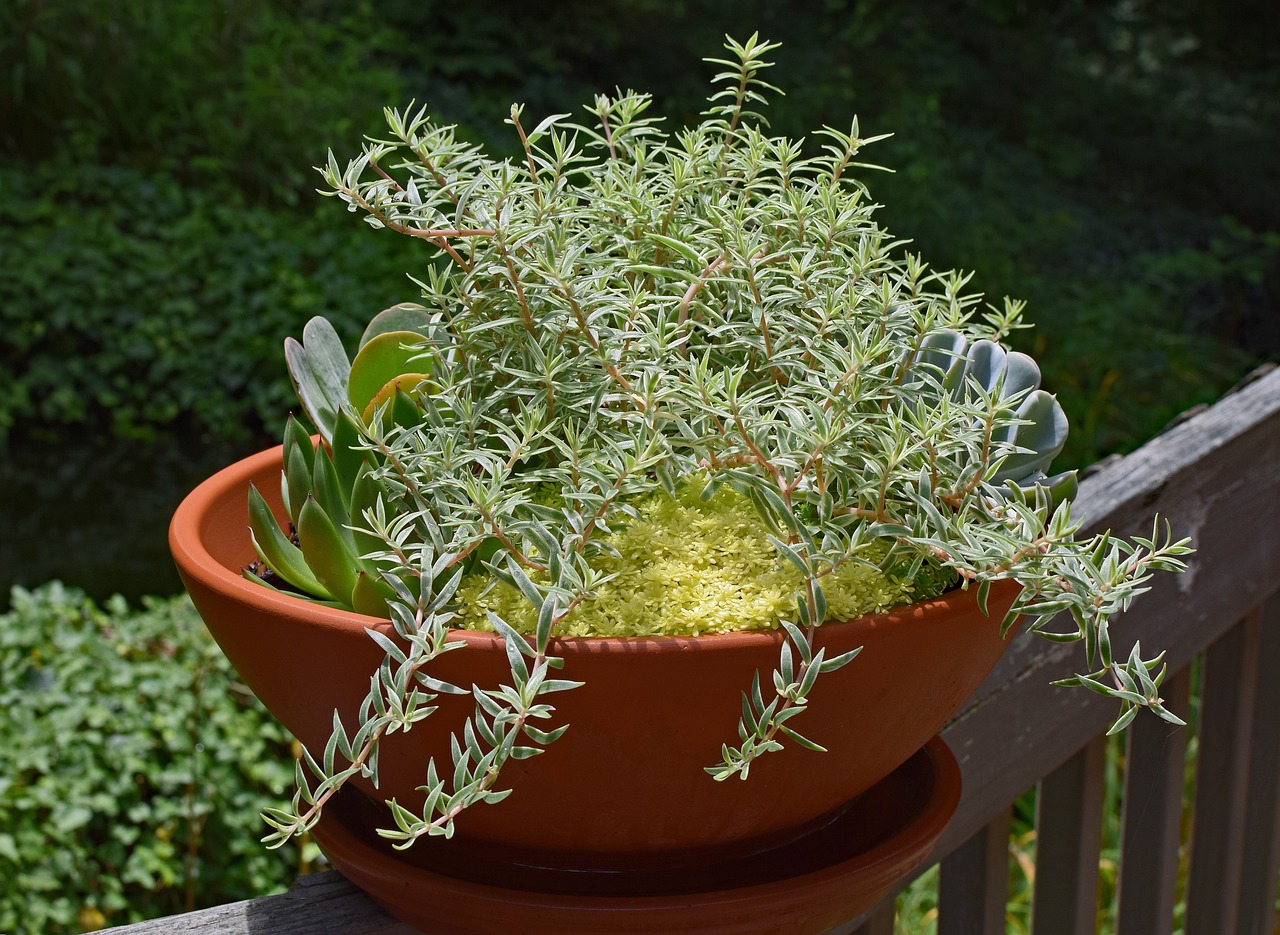
Winter Care
As the winter chill sets in, your succulent garden requires special attention to keep those vibrant little plants thriving. Just like how we bundle up in warm clothes to fend off the cold, succulents need their own winter care regimen. The key is to understand that while they are hardy, they can still suffer from frostbite and overwatering during the colder months. Let’s dive into some essential winter care tips that will help you maintain a healthy and beautiful succulent garden.
First and foremost, temperature control is crucial. Most succulents prefer temperatures between 60°F and 80°F (15°C to 27°C). If you live in an area where temperatures drop significantly, consider bringing your succulents indoors. Place them near a sunny window where they can soak up the winter sun. However, be cautious of drafts from windows and doors, as these can stress your plants. If indoor space is limited, you can also use grow lights to ensure your succulents receive adequate light during short winter days.
Next, let’s talk about watering practices. One of the most common mistakes during winter is overwatering. Succulents enter a dormant phase in colder months, meaning they require less water. A good rule of thumb is to water only when the soil is completely dry, which may be every 3 to 4 weeks, depending on your indoor humidity levels. When you do water, ensure that you do so thoroughly, allowing excess water to drain out. This helps prevent root rot, which is especially problematic in winter when the soil takes longer to dry out.
Another important aspect is humidity levels. While succulents thrive in dry conditions, indoor heating can create a dry environment that may stress your plants. To combat this, consider placing a humidifier in the room or grouping your succulents together to create a microclimate with higher humidity. Alternatively, you can place a shallow tray filled with pebbles and water beneath your pots. Just ensure that the pots themselves don’t sit in the water, as this can lead to root rot.
Finally, keep an eye out for pests and diseases. Winter can be a time when pests like mealybugs and spider mites become more prevalent, especially in indoor environments. Regularly check your plants for any signs of infestation, such as webbing or sticky residue. If you spot any pests, treat them promptly with insecticidal soap or neem oil to prevent them from spreading. Additionally, removing any dead leaves or debris from the soil can help minimize the risk of disease.
In summary, winter care for your succulents involves a combination of temperature management, careful watering, humidity control, and pest monitoring. By taking these steps, you can ensure that your succulent garden remains healthy and vibrant, even during the coldest months. Remember, just like us, succulents need a little extra love and attention during winter to flourish!
- How often should I water my succulents in winter? Water your succulents every 3 to 4 weeks, or when the soil is completely dry.
- Can I keep my succulents outside during winter? If you live in a region with mild winters, some succulents can stay outside, but it's best to bring them indoors if temperatures drop below 50°F (10°C).
- What should I do if my succulent leaves start turning brown? Brown leaves can indicate overwatering or insufficient light. Adjust your watering schedule and ensure they are getting enough sunlight.
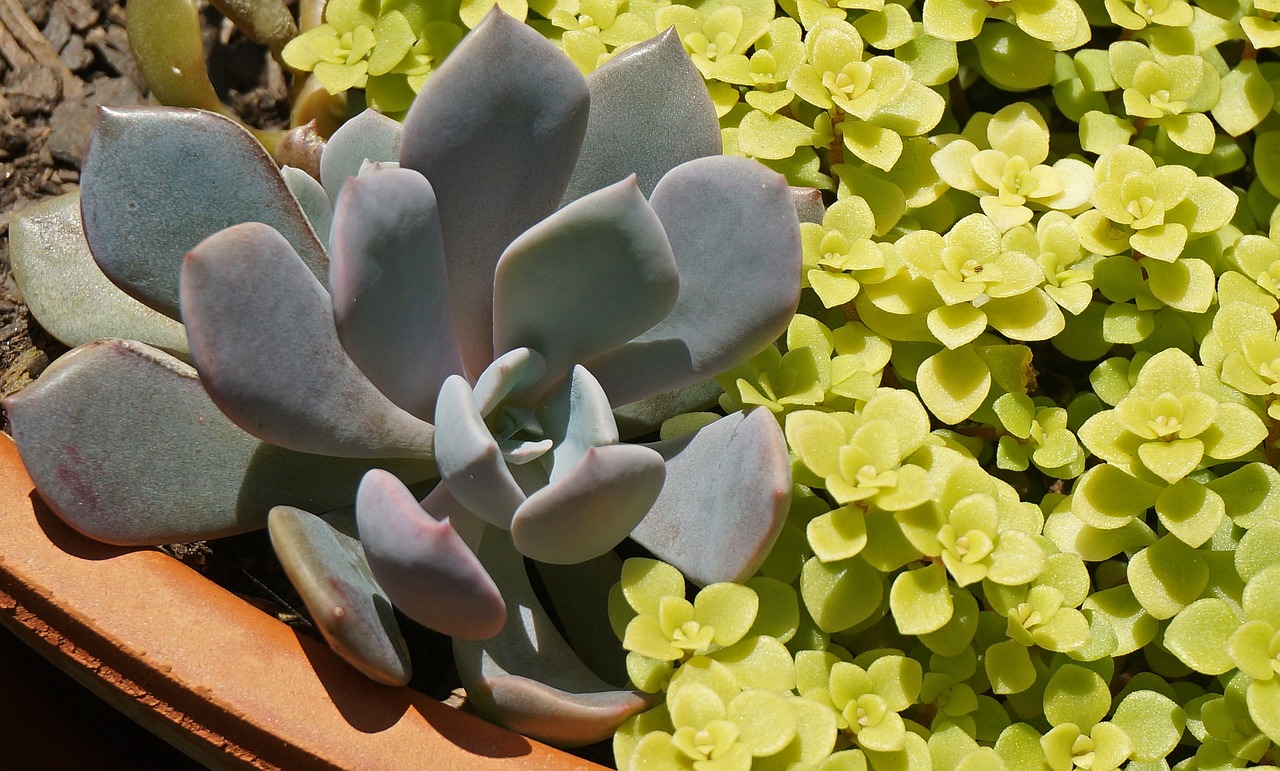
Summer Care
During the summer months, succulents face unique challenges that can impact their health and vitality. The intense heat and increased sunlight can lead to dehydration and sunburn if proper care is not taken. To ensure your succulents remain vibrant and healthy, it’s essential to implement a few key strategies. First and foremost, consider the watering schedule. Unlike during cooler months, succulents may require more frequent watering in the summer. However, it's crucial to avoid overwatering, as this can lead to root rot. A good rule of thumb is to check the soil moisture level; if the top inch of soil feels dry, it's time for a drink.
Another important aspect of summer care is providing adequate shade. While succulents thrive in bright light, too much direct sunlight can scorch their leaves. If you notice any signs of sunburn, such as browning or wilting leaves, consider relocating your plants to a spot with filtered sunlight or providing them with some afternoon shade. You can use sheer curtains for indoor plants or strategically position outdoor succulents under taller plants or structures to shield them from the harsh midday sun.
Additionally, monitoring humidity levels is vital. Summer often brings increased humidity, which can promote fungal diseases. To combat this, ensure good air circulation around your plants. If you're growing succulents indoors, consider using a fan or keeping windows open to allow fresh air to flow. This simple step can significantly reduce the risk of disease and keep your plants happy.
Lastly, don't forget about fertilization. Summer is a growing season for most succulents, so providing them with a balanced fertilizer can help them flourish. Opt for a diluted, water-soluble fertilizer specifically designed for succulents and cacti. Apply it every four to six weeks during the summer months to give your plants the nutrients they need to thrive. Just remember to water your succulents before applying fertilizer to avoid burning their roots.
In summary, summer care for succulents involves:
- Adjusting your watering schedule to prevent dehydration.
- Providing shade to protect against sunburn.
- Ensuring good air circulation to combat humidity-related issues.
- Regularly fertilizing to support growth.
By following these tips, you'll be well on your way to maintaining a healthy and thriving succulent garden throughout the summer months!
Q: How often should I water my succulents in the summer?
A: Typically, you should water your succulents when the top inch of soil feels dry. This may mean watering once a week or more, depending on the heat and humidity levels.
Q: Can I leave my succulents outside all summer?
A: Yes, but ensure they have some protection from the intense afternoon sun to prevent sunburn. You may need to move them or provide shade during the hottest parts of the day.
Q: What signs indicate my succulent is getting too much sun?
A: Look for signs like browning or wilting leaves. If you notice these symptoms, it's time to provide some shade or relocate your plant.
Q: Is fertilizing necessary during the summer?
A: While not strictly necessary, fertilizing can help your succulents grow more vigorously during their active growing season. Use a diluted fertilizer designed for succulents every four to six weeks.
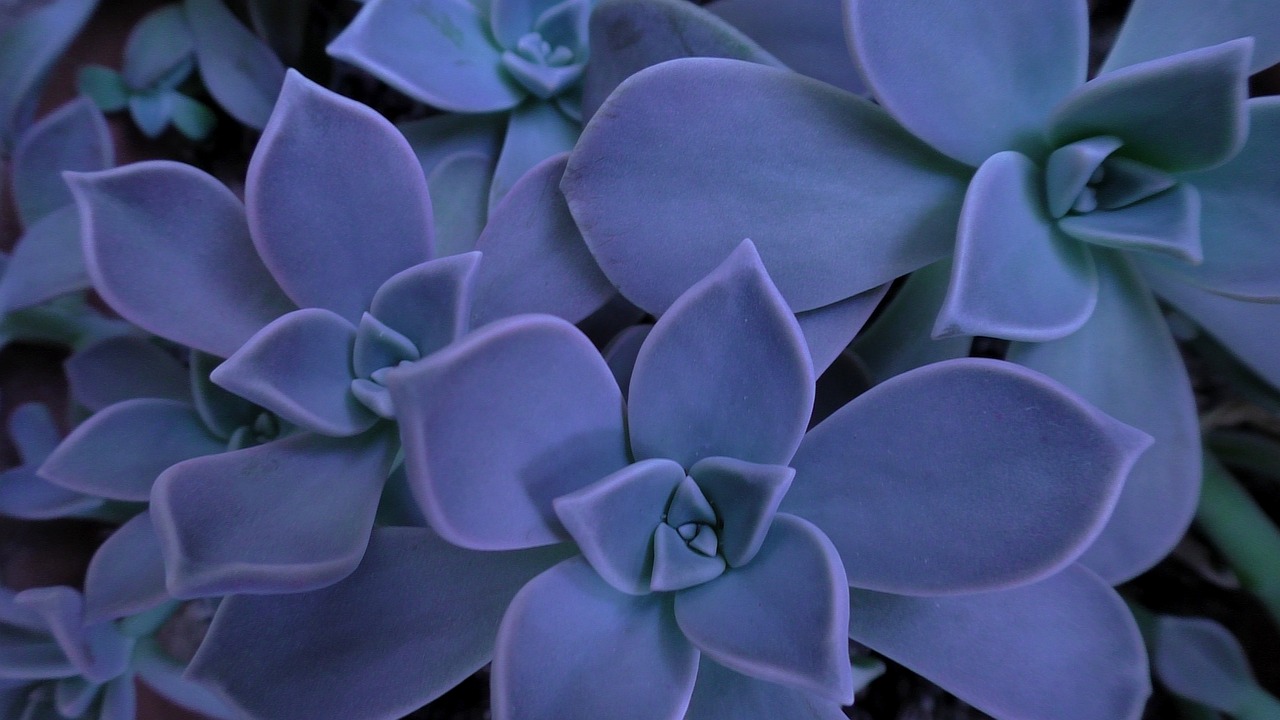
Propagation Techniques
Propagation is one of the most exciting aspects of gardening, especially when it comes to succulents. It’s like watching your plant family grow right before your eyes! There are several methods to propagate succulents, and each has its own charm and effectiveness. The two most popular techniques are leaf propagation and offset propagation. Let’s dive into these methods and discover how you can expand your succulent collection without spending a dime!
Leaf propagation is a straightforward and rewarding method. To get started, you’ll need a healthy succulent. Gently twist or cut a leaf from the stem, making sure to leave a clean cut. This is crucial because a jagged cut can invite rot. Once you have your leaf, let it dry for a day or two in a warm, dry spot. This drying period allows the cut end to callous over, which helps prevent rot when you plant it. After it has calloused, place the leaf on well-draining soil, preferably a succulent mix.
Next, mist the soil lightly to provide some moisture, but be careful not to overdo it. You want to keep the soil barely moist. In a few weeks, you should start to see tiny roots forming at the base of the leaf, followed by little plantlets emerging. This is where the magic happens! Once the plantlets have grown a few leaves of their own, you can gently remove the original leaf, which can now be discarded. It’s like seeing a new life spring from a simple leaf!
Offset propagation is another effective technique, especially for succulents that produce “pups” or offsets. These are small plants that grow at the base of the parent plant. To propagate offsets, gently remove the parent plant from its pot and inspect the base. Look for small rosettes or pups that are ready to be separated. Using a clean, sharp knife, cut the offset away from the main plant, ensuring that it has some roots attached.
Once you’ve separated the offset, let it dry for a few hours to a day, allowing the cut end to callous. After that, you can plant it in its own pot with well-draining soil. Water it lightly, and place it in a bright location but out of direct sunlight until it establishes itself. With a little patience and care, you’ll soon have a brand new succulent thriving on its own!
Here are some common questions about succulent propagation:
- How long does it take for succulents to propagate? It typically takes a few weeks for leaf cuttings to root and develop new growth, while offsets may take a bit longer depending on their size and health.
- Can I propagate any type of succulent? Most succulents can be propagated using these methods, but some varieties may be more challenging. Always research specific types to ensure success.
- What should I do if my propagated leaves rot? If you notice rot, it’s usually due to overwatering or not allowing the cut to callous properly. Make sure to adjust your watering habits and give the cuttings time to dry before planting.
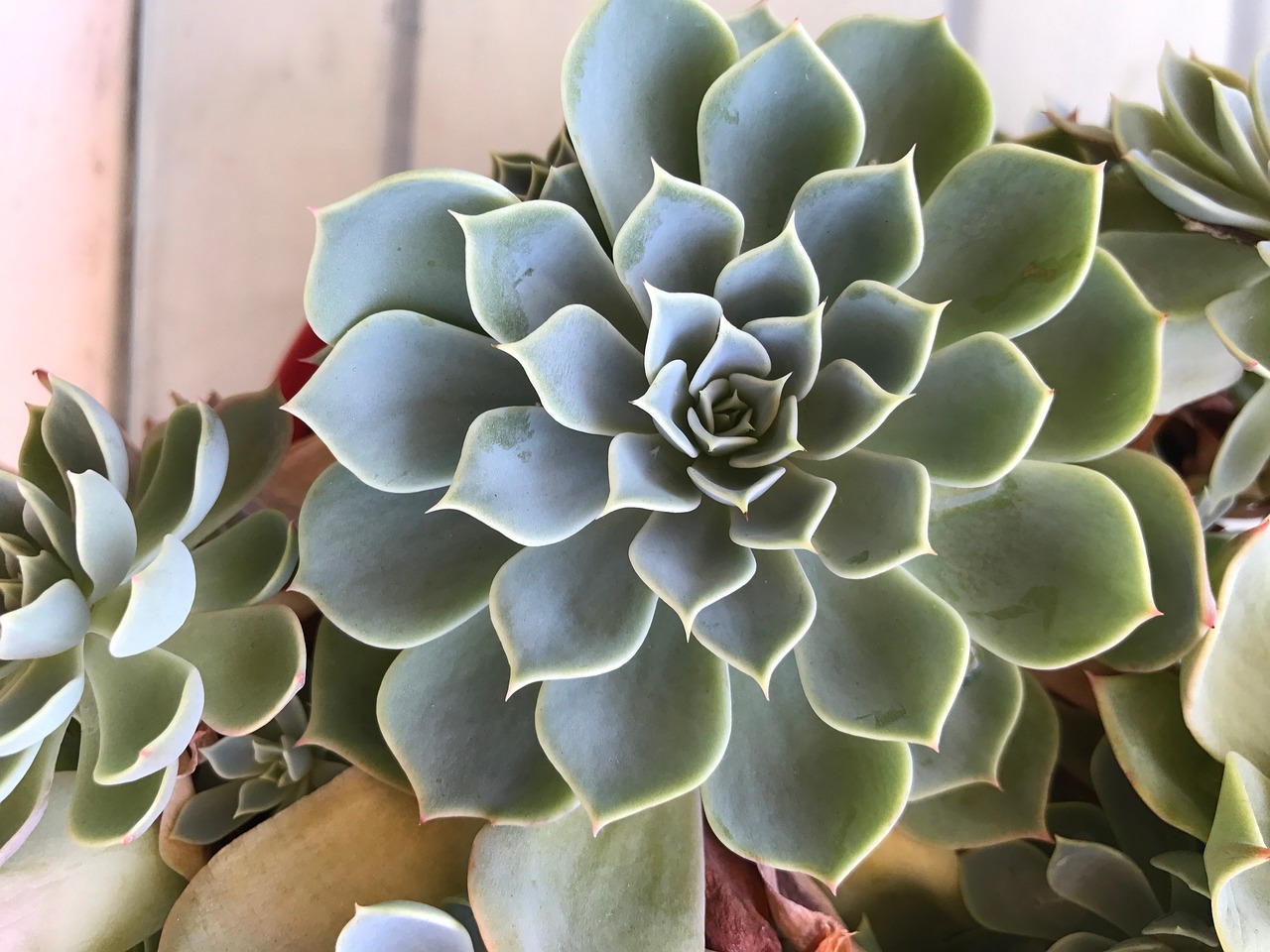
Leaf Propagation
Leaf propagation is one of the most rewarding and straightforward methods for expanding your succulent collection. Imagine being able to take a single leaf from your favorite plant and watch it transform into a brand new succulent! This method not only allows you to grow new plants but also helps you save money while sharing your passion with friends and family. The beauty of leaf propagation lies in its simplicity, making it accessible for both beginners and seasoned gardeners alike.
To start, you'll need to carefully select a healthy leaf from a mature succulent. It’s essential to choose a leaf that is plump and free from any signs of damage or disease. Once you've selected your leaf, gently twist it off the stem, ensuring you get a clean break. This is crucial, as a clean cut helps prevent potential rot. After removing the leaf, allow it to dry for a few days in a warm, dry place—this process, known as callousing, helps to protect the leaf from rot when planted.
Once the leaf has calloused, it’s time to plant it! Here’s a simple step-by-step guide:
- Choose the Right Soil: Use a well-draining succulent mix or create your own by mixing regular potting soil with sand or perlite.
- Planting: Place the calloused end of the leaf on top of the soil without burying it. This allows the leaf to absorb moisture from the soil while preventing rot.
- Watering: Mist the soil lightly to provide some moisture, but be careful not to overwater. Remember, succulents prefer dry conditions!
- Light Conditions: Place the pot in a bright, indirect light location. Too much direct sunlight can scorch the leaf.
After a few weeks, you should start to see roots developing from the base of the leaf, and eventually, tiny new succulents will emerge. This process can take anywhere from 2 to 6 weeks, depending on the type of succulent and environmental conditions. Patience is key! Once the new plants are large enough to handle, you can gently separate them from the original leaf and transplant them into their own pots.
Leaf propagation not only allows you to multiply your succulent collection but also gives you a deeper understanding of these fascinating plants. It’s like nurturing a little miracle, watching as life unfolds from a simple leaf. Just remember, every succulent is unique, and some may take longer than others to propagate. Enjoy the journey, and before you know it, you’ll have a vibrant garden filled with your very own propagated succulents!
Q: How long does it take for a leaf to root?
A: Typically, it takes about 2 to 6 weeks for a leaf to develop roots, but this can vary based on the succulent type and environmental conditions.
Q: Can I propagate any type of succulent leaf?
A: Most succulents can be propagated from leaves, but some varieties are more successful than others. It's best to research the specific type you have in mind.
Q: What should I do if my leaf starts to rot?
A: If you notice rot, remove the leaf immediately and try again with a new, healthy leaf. Ensure that the leaf has been allowed to callous properly before planting.

Offset Propagation
Offset propagation is one of the most effective and rewarding methods for expanding your succulent collection. If you've ever noticed little baby plants sprouting from the base of a mature succulent, you're looking at offsets—these are the plant's natural way of reproducing! The beauty of offset propagation lies in its simplicity and the joy of watching new life emerge from your existing plants.
To start the process, you first need to identify a succulent that has produced offsets. Common succulents that are known for their offsets include Hens and Chicks (Sempervivum) and Agave. Once you’ve selected your parent plant, gently remove the offsets from the main plant. This is typically done by twisting or cutting the offset away with a clean, sharp knife. Be careful not to damage the roots of either the offset or the parent plant, as this can hinder their growth.
After you’ve successfully separated the offsets, it’s essential to allow them to callous for a few days. This means placing them in a dry, shaded area to let the cut ends dry out and form a protective layer. This step is crucial as it helps prevent rot when you eventually plant them in soil. Once the offsets have calloused, you can prepare them for planting.
When it comes to planting your offsets, the right soil mix is vital. A well-draining soil is a must, and you can easily create this by mixing potting soil with perlite or sand. Fill a small pot with this mixture, and then gently place the offset into the soil, ensuring that the roots are covered while leaving the leaves above the soil line. Water the newly planted offset lightly, just enough to settle the soil around it. Remember, overwatering is one of the biggest mistakes you can make at this stage!
After planting, position your new offsets in a location where they can receive bright, indirect sunlight. This will encourage healthy growth without the risk of sunburn. Over the next few weeks, keep an eye on your offsets, watering them sparingly. You’ll know they’re adjusting well when you see new growth emerging.
In summary, offset propagation is a fantastic way to multiply your succulents with minimal effort. Just remember to be gentle during the separation process, allow the offsets to callous, and provide them with the right care as they establish their roots. Before you know it, you’ll have a thriving collection of succulents that you grew all by yourself!
- How long does it take for offsets to grow into mature plants? It typically takes a few months for offsets to establish themselves and start growing significantly, depending on the succulent type and growing conditions.
- Can I propagate offsets from any succulent? Not all succulents produce offsets. Look for varieties known for this method, like Hens and Chicks or Agave.
- What should I do if my offsets don’t root? If your offsets aren’t rooting, ensure they are in well-draining soil and not being overwatered. Patience is key—sometimes they just need a little more time!
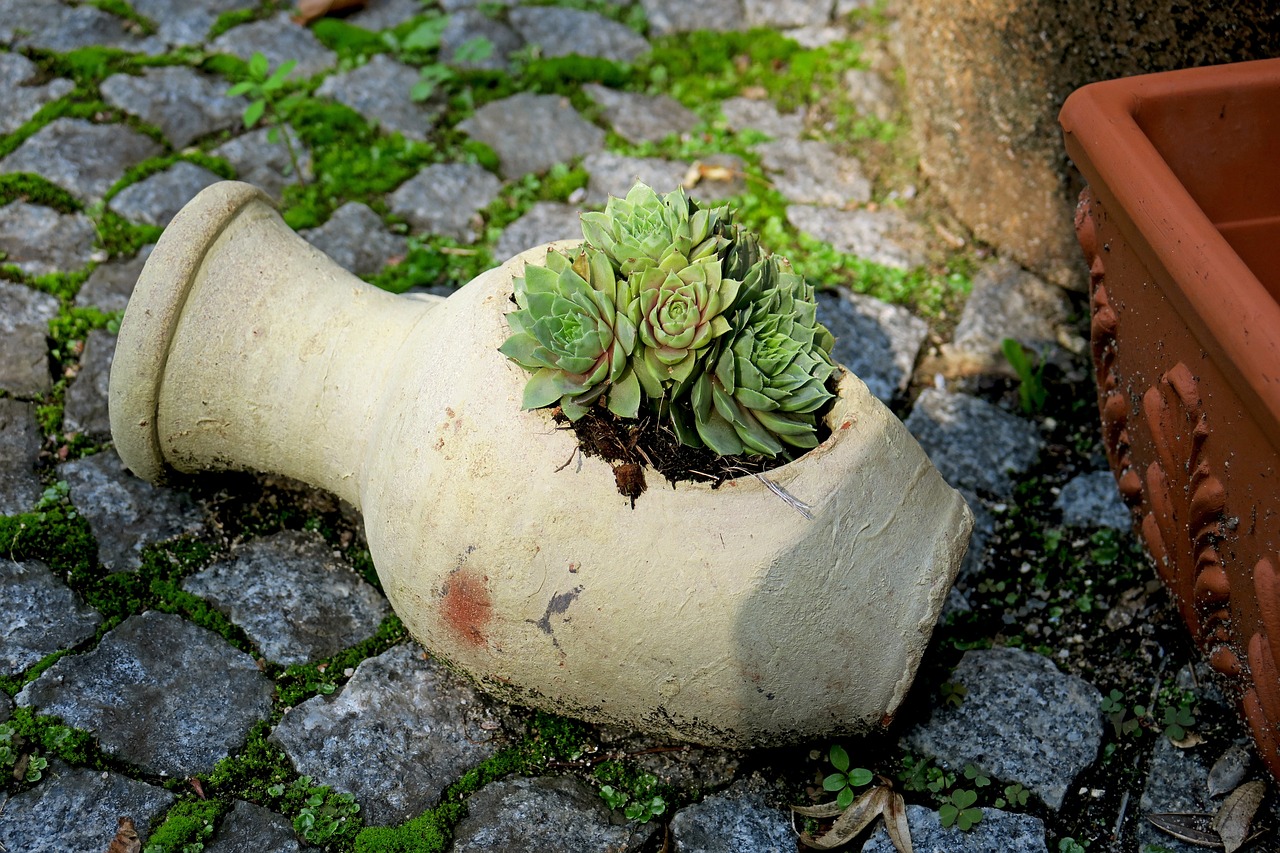
Maintaining Your Succulent Garden
Maintaining your succulent garden is not just a task; it’s an art form that requires a bit of love and attention. Just like any living thing, succulents need care to flourish and continue to bring joy to your space. Regular maintenance ensures that your plants remain healthy and vibrant, allowing you to enjoy their beauty for years to come. So, what does it take to keep your succulent garden in tip-top shape? Let’s dive into some essential practices that will help you nurture your green friends.
One of the key components of maintaining a succulent garden is pruning. Pruning is not just about keeping your plants looking tidy; it also encourages healthy growth. When you prune, you remove dead or overgrown leaves, which can prevent overcrowding and allow for better air circulation. This is crucial because succulents thrive in well-ventilated environments. To prune effectively, use clean, sharp scissors or pruning shears. Aim to cut just above a leaf node, which will promote new growth. Remember, a little snip here and there can go a long way!
Another important aspect of maintenance is repotting. As your succulents grow, they may outgrow their pots, leading to root binding. This can stunt their growth and even lead to health issues. Generally, you should consider repotting your succulents every couple of years or when you notice they’re becoming root-bound. When repotting, choose a pot that’s slightly larger than the current one and ensure it has proper drainage holes. Use a well-draining soil mix specifically designed for succulents to give your plants the best chance of thriving in their new home.
In addition to pruning and repotting, it’s essential to monitor the overall health of your succulents. Look out for signs of distress, such as yellowing leaves, wilting, or unusual spots. These symptoms can indicate issues like overwatering, pests, or insufficient light. If you notice any of these signs, take immediate action. For example, if your plants are overwatered, let the soil dry out completely before watering again. On the other hand, if pests are the problem, you may need to treat your plants with insecticidal soap or neem oil.
Lastly, don’t forget about the power of seasonal adjustments. Succulents have different needs depending on the season. During the warmer months, they may require more water and sunlight, while in the winter, they need less. Adjusting your care routine to match the seasons can make a significant difference in your plants' health. For example, you might reduce watering frequency in the winter months, allowing the soil to dry out more thoroughly between waterings. This seasonal care helps your succulents adapt to changing conditions and thrive throughout the year.
- How often should I water my succulents? Watering frequency depends on the season and your climate. Generally, allow the soil to dry out completely between waterings, which could mean watering once every week or two in the summer and less frequently in the winter.
- What type of soil is best for succulents? A well-draining soil mix specifically formulated for succulents or cacti is ideal. You can also create your own mix using potting soil, sand, and perlite.
- Can I grow succulents indoors? Absolutely! Many succulent varieties thrive indoors, as long as they receive adequate sunlight. Place them in a bright spot, preferably near a window.
- How do I know if my succulent is getting enough light? If your succulent is stretching toward the light or has pale, elongated leaves, it may not be getting enough light. Conversely, if the leaves are sunburned or scorched, it may be receiving too much direct sunlight.

Pruning Techniques
Pruning is an essential practice for maintaining the health and aesthetics of your succulent garden. Just like a haircut can enhance your appearance, pruning can help your succulents grow stronger and more beautifully. But how do you know when and how to prune your plants? It's all about understanding the needs of your specific succulents and timing your cuts correctly.
First, let's talk about when to prune. The best time to prune succulents is during their active growing season, typically in the spring and early summer. This is when they are most likely to recover quickly from any stress caused by cutting. However, if you notice any dead or damaged leaves, don't hesitate to remove them at any time of the year. It’s like cleaning your room; a tidy space is always more pleasant!
When pruning, use clean, sharp scissors or pruning shears to make precise cuts. This reduces the risk of disease entering through the cut surfaces. Begin by removing any dead or yellowing leaves, which can detract from the plant's overall appearance and health. You can also prune to control the size of your succulents, especially if they start to grow leggy or out of proportion. Aim to cut back about one-third of the plant, focusing on the stems and leaves that are overextending.
Here are some techniques to consider while pruning:
- Cutting Back Stems: If your succulent has elongated stems, you can cut them back to promote bushier growth. Make sure to cut just above a leaf node to encourage new growth.
- Removing Offsets: Some succulents produce offsets, or "pups," that can be separated and replanted. When you see these, gently twist them off the mother plant and replant them in their own pot.
- Leaf Removal: If a leaf is damaged or diseased, remove it by twisting it off at the base. This not only improves the plant's appearance but also prevents the spread of disease.
After pruning, allow the cut surfaces to dry and callous over for a few days before watering. This helps prevent rot and encourages healthy new growth. Think of it as giving your succulents a little spa day—they’ll thank you for it by flourishing!
Lastly, it’s important to monitor your plants after pruning. Keep an eye on their growth and adjust your care routine accordingly. If you notice any signs of stress, such as wilting or discoloration, you may need to alter your watering or light conditions. Regular pruning not only keeps your succulents looking their best but also enhances their resilience against pests and diseases.
In summary, mastering the art of pruning is a key skill for any succulent enthusiast. With the right techniques and a little practice, you'll be able to shape your garden into a vibrant, healthy oasis that showcases the unique beauty of each plant.
Q: How often should I prune my succulents?
A: Generally, you should prune your succulents once a year during their active growing season. However, you can remove dead or damaged leaves anytime.
Q: Can I propagate my succulents from pruned leaves?
A: Yes! Many succulents can be propagated from leaves. Just let the cut end dry out for a few days before placing it in soil.
Q: What tools do I need for pruning?
A: A pair of sharp, clean scissors or pruning shears is all you need. Make sure to sterilize your tools before use to prevent disease transmission.
Q: What should I do if I accidentally cut too much?
A: Don’t panic! Succulents are resilient. Just ensure they get the right light and water, and they should bounce back.

Repotting Guidelines
Repotting your succulents is an essential practice that ensures they have enough space to grow and thrive. Over time, as your succulent matures, it may outgrow its current pot, leading to root crowding and potential health issues. So, when should you consider repotting? Generally, you should repot your succulents every 1 to 2 years, or when you notice the roots are growing out of the drainage holes or the plant appears to be stunted in growth.
Before you dive into repotting, it's crucial to gather the right materials. You'll need a new pot that is slightly larger than the current one, fresh succulent soil, and some tools like a trowel and scissors. The new pot should have good drainage holes to prevent water from accumulating at the bottom, which is a common cause of root rot. Succulent soil is specially formulated to provide the right balance of drainage and nutrients, making it ideal for your plants.
When you're ready to repot, start by gently removing the succulent from its current pot. You can do this by carefully loosening the soil around the edges and tipping the pot to slide the plant out. Be cautious with the roots; they are delicate and can break easily. Once the plant is out, inspect the roots for any signs of rot or damage. If you find any unhealthy roots, trim them off with sterilized scissors to promote healthy growth.
Now, place your succulent in the center of the new pot and fill in the sides with fresh soil. Make sure the plant is at the same depth as it was in the previous pot—this is crucial for its health. After filling the pot, gently press down on the soil to eliminate any air pockets, but avoid compacting it too much, as succulents prefer aerated soil. Once you’ve repotted, give your succulent a little time to adjust. It's best to wait about a week before watering to allow the roots to heal and adapt to their new environment.
Finally, don’t forget to place your repotted succulent in an appropriate light condition. Depending on the type of succulent, it may need more or less sunlight than before. Monitor its progress and watch for any signs of stress, such as wilting or discoloration. With these guidelines, you'll ensure that your succulent continues to flourish in its new home!
- How often should I repot my succulents? It's generally recommended to repot every 1 to 2 years, or when you notice the roots are overcrowded.
- What type of pot is best for succulents? A pot with drainage holes is essential to prevent root rot. Terracotta pots are a popular choice due to their breathability.
- Can I use regular potting soil for succulents? While you can, it's better to use a soil mix specifically designed for succulents to ensure proper drainage and aeration.
- What should I do if I notice root rot? Trim away the affected roots and repot the plant in fresh, dry soil to help it recover.
- Is it necessary to water after repotting? Wait about a week before watering to allow the roots to heal and adjust to the new environment.
Frequently Asked Questions
- What are the best types of succulents for beginners?
For those just starting out, Jade plants, Hens and Chicks, and Aloe Vera are fantastic choices. They are hardy, require minimal care, and can thrive in various conditions, making them perfect for novice gardeners.
- How often should I water my succulents?
Watering frequency can vary based on the environment, but a good rule of thumb is to water your succulents every 2-3 weeks. Always check the soil; if it's dry an inch down, it's time to give them a drink!
- Can succulents survive indoors?
Absolutely! Many succulents adapt well to indoor conditions. Just ensure they get plenty of bright, indirect sunlight, and you'll have a thriving indoor garden!
- What kind of soil should I use for succulents?
Succulents prefer well-draining soil. A mix specifically designed for cacti and succulents is ideal, or you can create your own by combining potting soil with sand or perlite.
- How can I tell if my succulent is getting too much light?
If your succulent is developing brown or crispy spots, it might be getting too much direct sunlight. Conversely, if it’s stretching towards the light, it may not be getting enough. Finding that sweet spot is key!
- What should I do if my succulent has pests?
First, identify the pest. Common offenders include mealybugs and aphids. You can remove them by hand or use a gentle insecticidal soap. Regularly inspecting your plants can help catch infestations early!
- How do I propagate my succulents?
Propagation can be done through leaf cuttings or offsets. For leaf cuttings, let the leaves dry for a few days before placing them on soil. Offsets can be gently pulled from the mother plant and planted directly.
- When is the best time to fertilize my succulents?
The best time to fertilize is during the growing season, typically in spring and summer. Use a diluted, balanced fertilizer every month to give your succulents a nutrient boost!
- How do I know when to repot my succulents?
If you notice roots growing out of the drainage holes or the plant seems top-heavy, it’s time to repot. Generally, repotting every 1-2 years is a good practice to ensure they have enough space to grow.



















